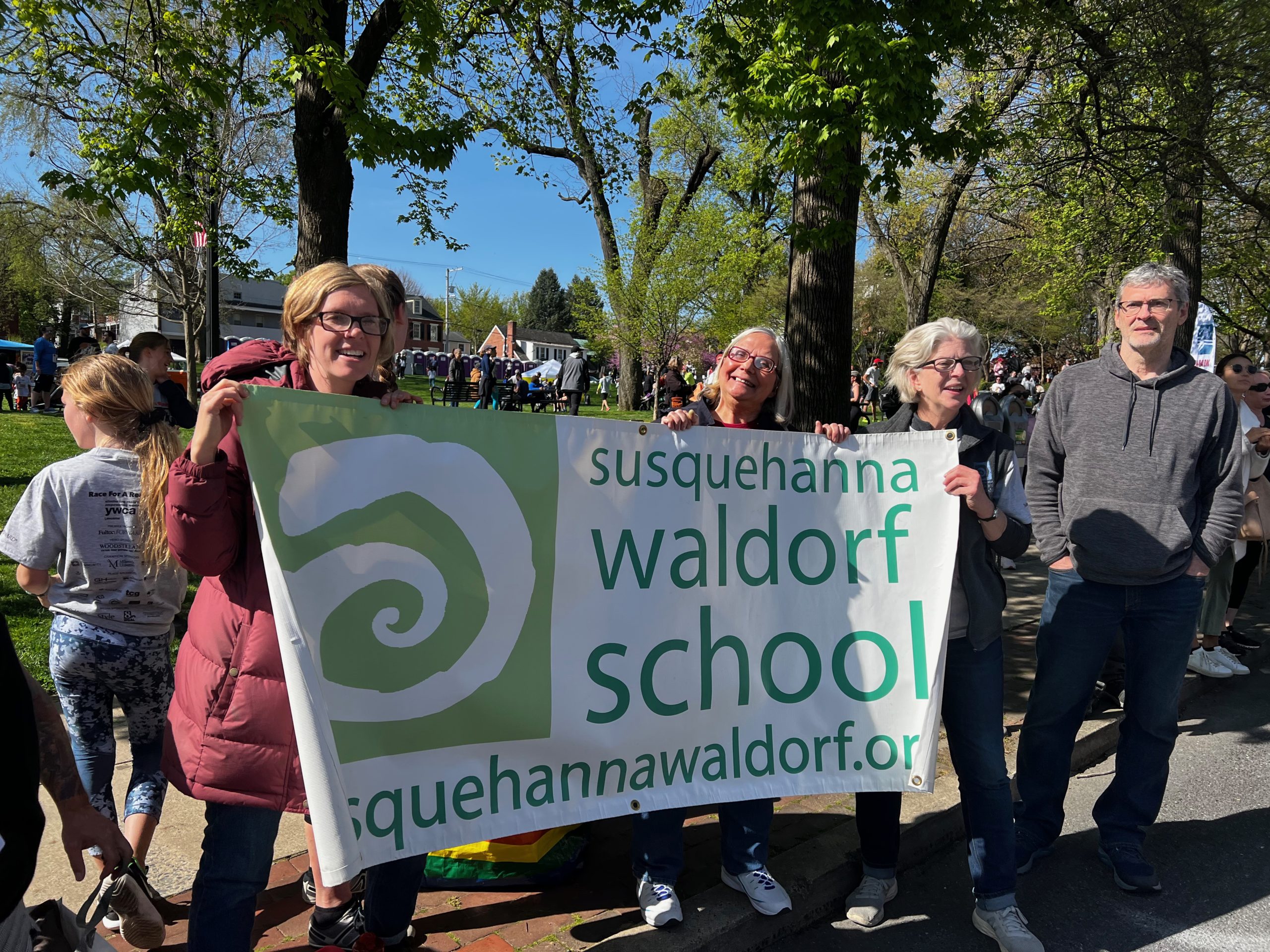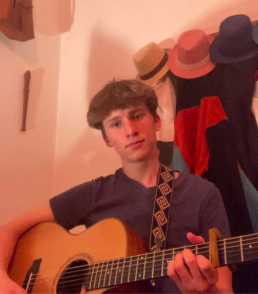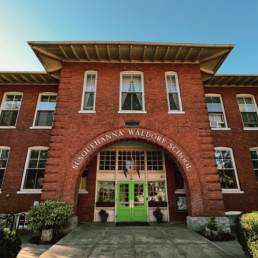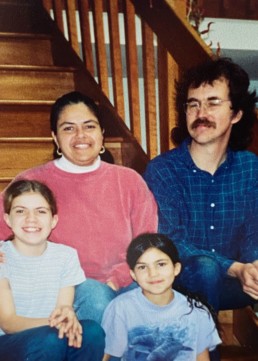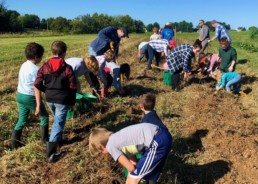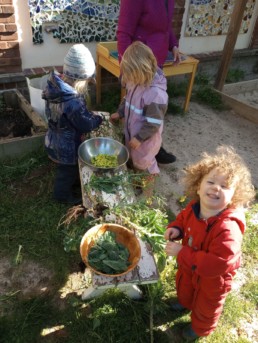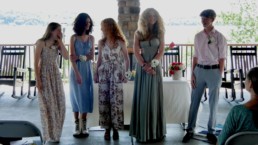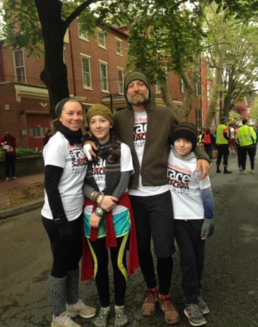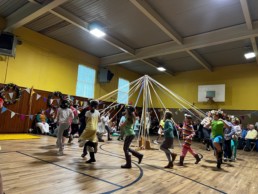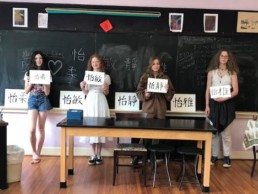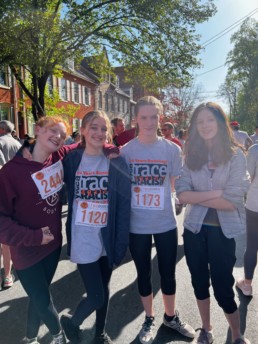35th Anniversary Spotlight: Alum Noah Fitz
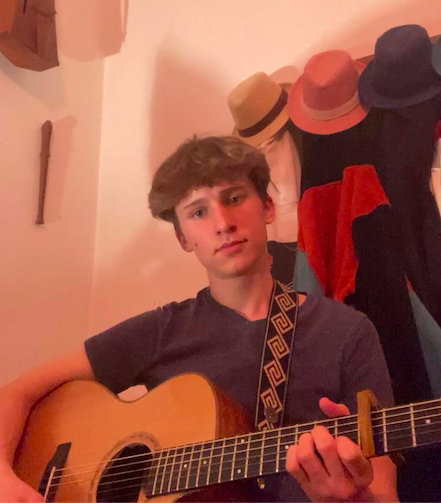 We are celebrating 35 years of Susquehanna Waldorf School this year! In honor of our 35th anniversary, we’re interviewing members of our community to share why they love SWS. Class of 2019 Alum, Noah Fitz, sat down with us to talk about his time at SWS.
We are celebrating 35 years of Susquehanna Waldorf School this year! In honor of our 35th anniversary, we’re interviewing members of our community to share why they love SWS. Class of 2019 Alum, Noah Fitz, sat down with us to talk about his time at SWS.
Time at SWS and where he is now...
I started at SWS in kindergarten and went grade through grade up until 8th grade. I graduated from SWS in 2019. Now I am in Donegal High school going into my senior year and proceeding to college soon which I greatly look forward to. So big steps ahead and a big past here.
Favorite memories of SWS?
I have a lot. What pops into my head most recently is our Bahamas class trip with our class and our teacher. There are so many memories from that trip but I remember playing cards below deck while traveling in this picture perfect scenery that you could only imagine. We had such a close knit group and it really impacted my experience at Susquehanna Waldorf School.
I don’t think I can bond with a group more than I bonded with my classmates. I have extremely close connections to a lot of them. Some of us have gone our own ways but the majority of us have stayed closely connected. We still do, 3 or 4 times a year, big get togethers as a group to maintain our friendships. I think they’re here to stay. That’s a powerful thing to have growing up. The same group of people who were always with me throughout my education. The ways we connected at SWS were not solely through education but also through the play that Waldorf education introduces. It wasn’t just education time and play time. It was a mix of both through the education, through experiments, and hands on learning that we got to know each other and got to know our teacher. We grew as a group through learning, through playing, and through the combination of both.
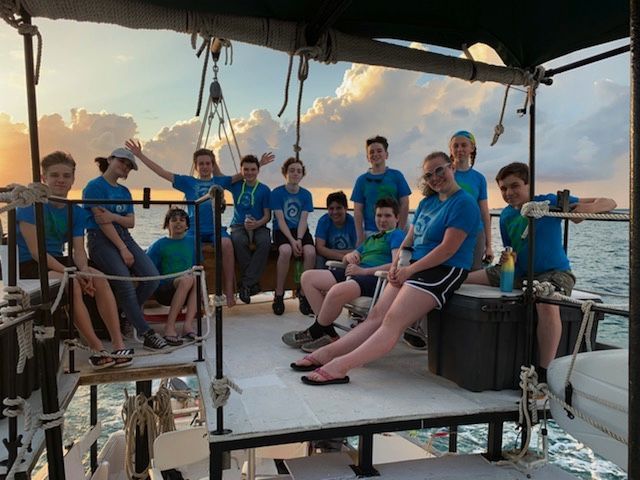
How did SWS prepare you for high school? How has it impacted your college application process?
Going from Waldorf into high school was a scarier transition in thought than what it actually turned out to be. I was afraid that I wouldn’t know anyone. I was afraid that I wouldn’t get along with anyone. I realized that it depended on me too. I was taught through Waldorf to put my skills and interests to work and it took me awhile to remember that but in 10th grade, once COVID was kind of wrapping up in our education at Donegal, I utilized my many resources in clubs and classes. I found out how I can get engaged in the education. SWS prepared me for this by having an open mind and teaching me that I have a wide range of skills that don't pertain to one academic interest or one skill set. I can be an artist and I can be a mathematician. I can be into science but I can also love English. So much beyond that, Waldorf taught me to get engaged and explore my interests. So when I started taking advantage of that opportunity in high school, I found myself much more accepted and accepting of myself at this new location.
The way Waldorf education is projecting me toward college is a different topic in its own. I see myself learning, through high school and my experience at SWS, what way I learn best and what way I can best achieve my goals and be successful. That has helped me look for a school with a certain value set that is very closely connected to how Waldorf education shaped me. I'm able to see all of the potential I have to further my academic interests through the teachers at SWS, being a well-rounded person, and trying to utilize everything I have.
Do you know what you'd like to study in college?
I don’t want to speak for everyone but going towards college, we think about what major we're applying to. So many of my Waldorf classmates agree with me that it’s hard to pick one. I see my peers in public school go through their high school experience knowing what they want to do, "this is what I’m good at, this is what I’m going to pursue." There is a thought process that you have to focus on one area to be successful and have one career. Waldorf teaches us to think with a different perspective. We can do so much more beyond just what we're good at. Therefore, I am very much undecided, but I have so many interests that I’ve thought about and explored in the colleges I’m looking at such as finance, economics, international studies, and, even, fashion design.
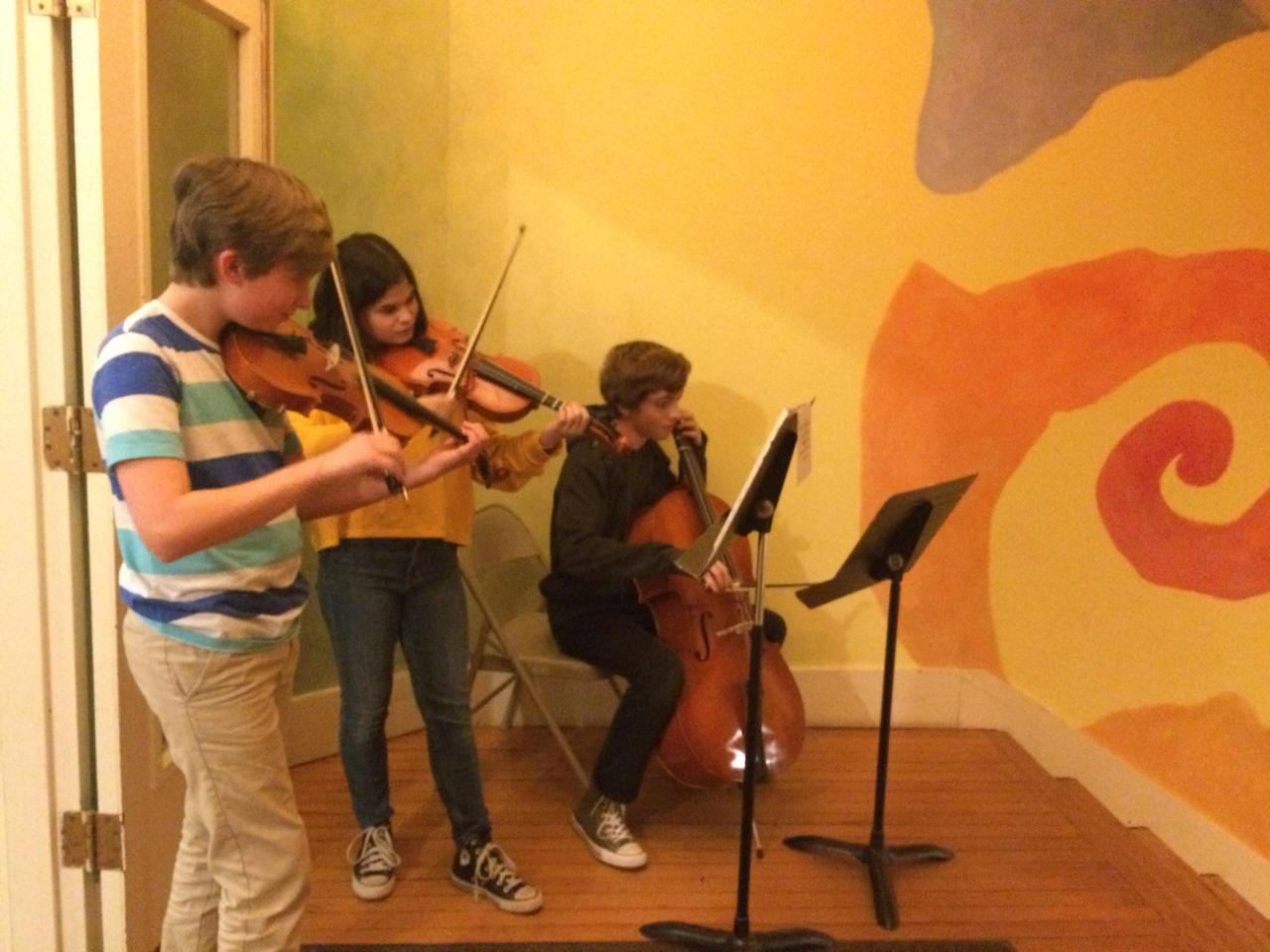
What is your perspective on your Waldorf education years since entering high school and preparing for college?
I’ve grown to become proud of the educational background that Waldorf provided me. Not to boast about it but to accept that the education I was given is so valuable to me as an individual. For some it doesn’t work but for many it does. And for everyone it does, we can really appreciate it. Through time I’ve acknowledged that learning in a small community has been so evident in my life. I’m always drawn back to one. No matter what it is, I always want that small community. I try to make them, I try to build them, I try to make these connections wherever I am. That’s an aspect of my education that I’ve grown so appreciative of through my reflections.
Another strange little thing is the importance of a simple greeting. Shaking one’s hand and an intentional greeting at a door, at a threshold of meeting someone, is a very simple tradition. We greeted our teacher every morning at SWS and it has taught me a lot about the professional world. Not only that but simple relationships and communications basics that have helped me along my path in high school. The appreciation for all of the things that I learned is growing and I think it will continue to grow.
It’s a big part of my applications for college. It’s a big part of who I am and it always will be. That's why I’m tying it into my resumes and introductions as I apply for college. Waldorf education has made me a different person from who I would’ve been. Respecting and appreciating that has been a big part of understanding the difference between my experience in public high school and Waldorf education.

What makes SWS special?
I think the biggest thing that stands out to me is the small class size that follows along with one teacher from grade one through eight. That community and connection between the 12 of us and our teacher that waxed and waned throughout the years was something so unique to Waldorf that I don’t know who I would be without it. It’s a funny thing to know your teacher so well that she knows exactly who you are, how you learn, how you play, how you socialize, how you interact with your education and with your environment. That teacher aids you and caters her/his/their ability to your best learning interests. Not just so we’re the most successful but to challenge us and become our best as a person. Through this interaction, we grew, got to know each other and have stayed connected, me and my teacher as well as my class. I think it’ll always be a connection that I cherish and value. So through this eight year long journey with my teacher, that’s what makes Waldorf so very special and unique to me.
The 2022-23 School Year Begins!
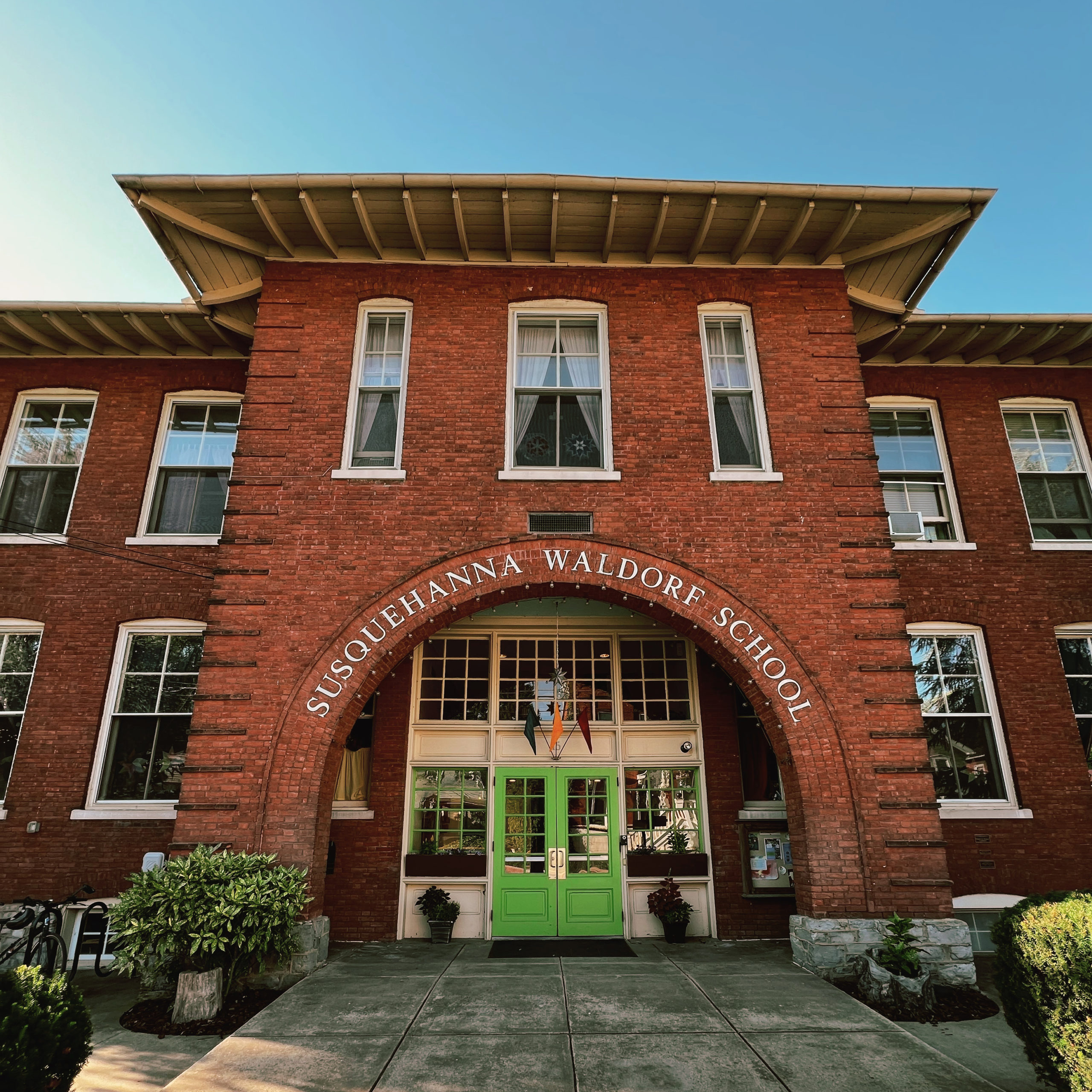
We received some much needed rain here in the Susquehanna Valley as we welcomed in the 22-23 school year. There was a buzz in the air as students and parents arrived. The playground was ready to be enjoyed, the classrooms were ready to welcome in the students, and the gym was prepared for the Rose Ceremony. A lot of time, love, and energy was put into ensuring that the school year started with ease and joy.
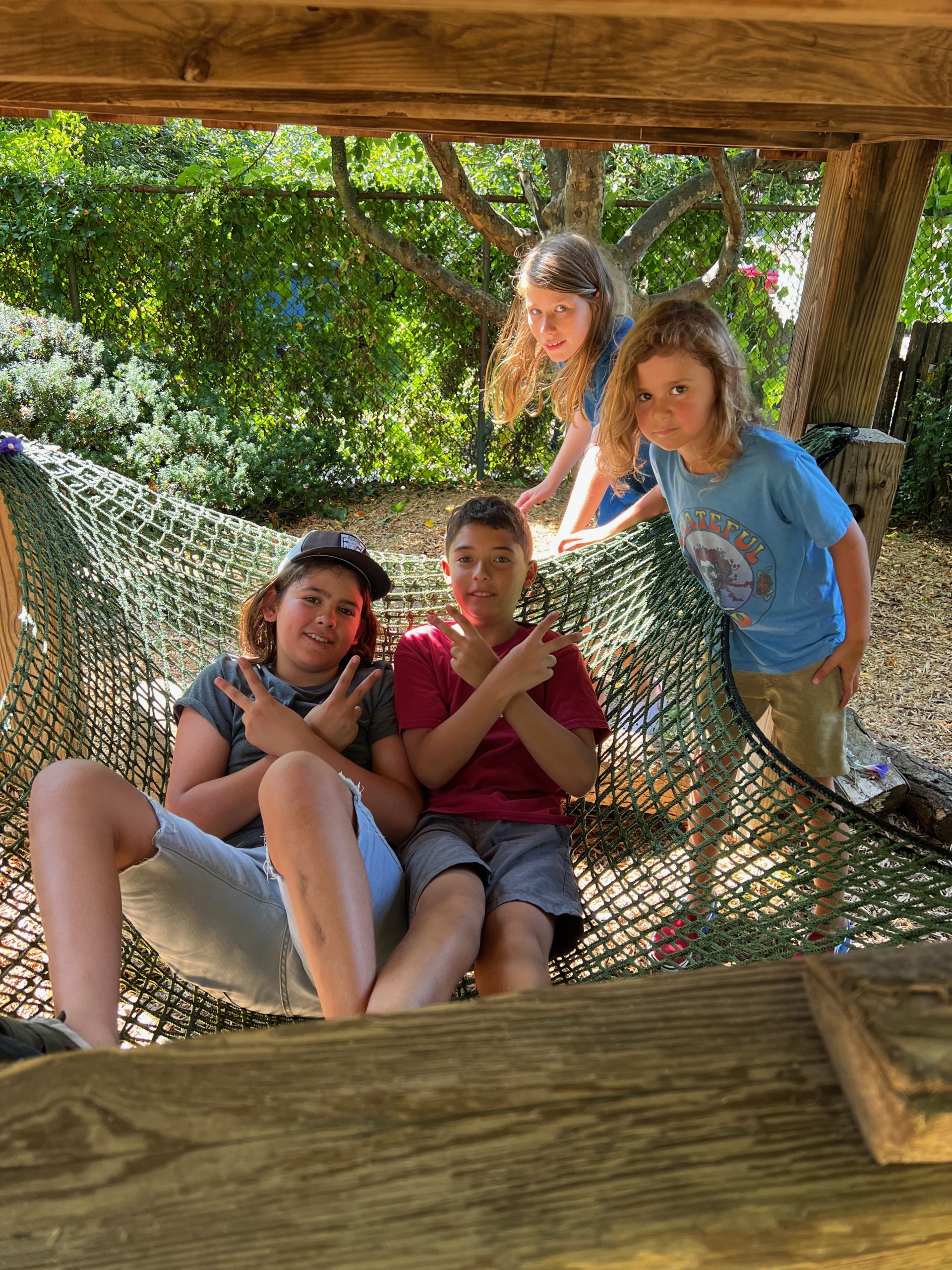
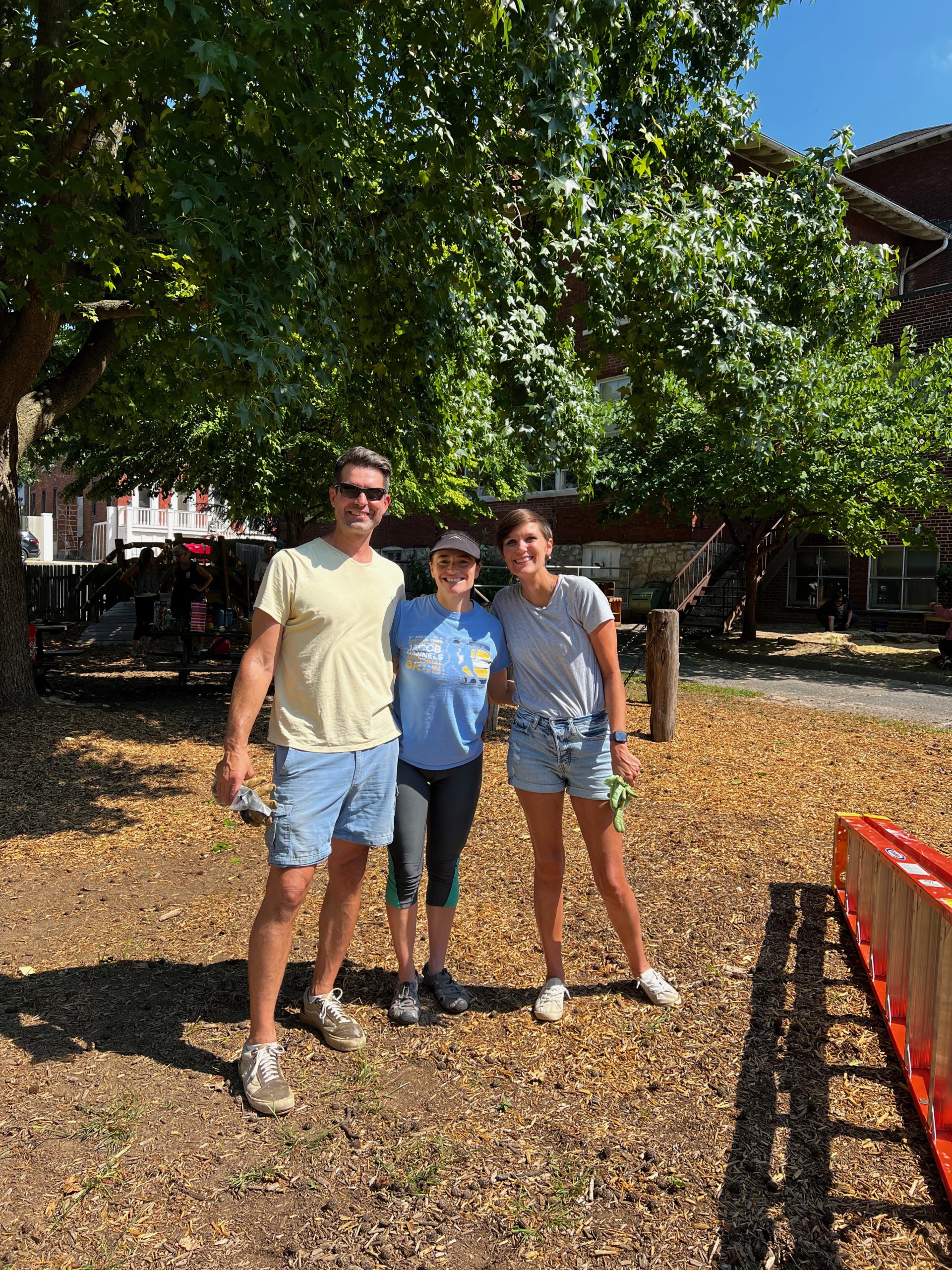
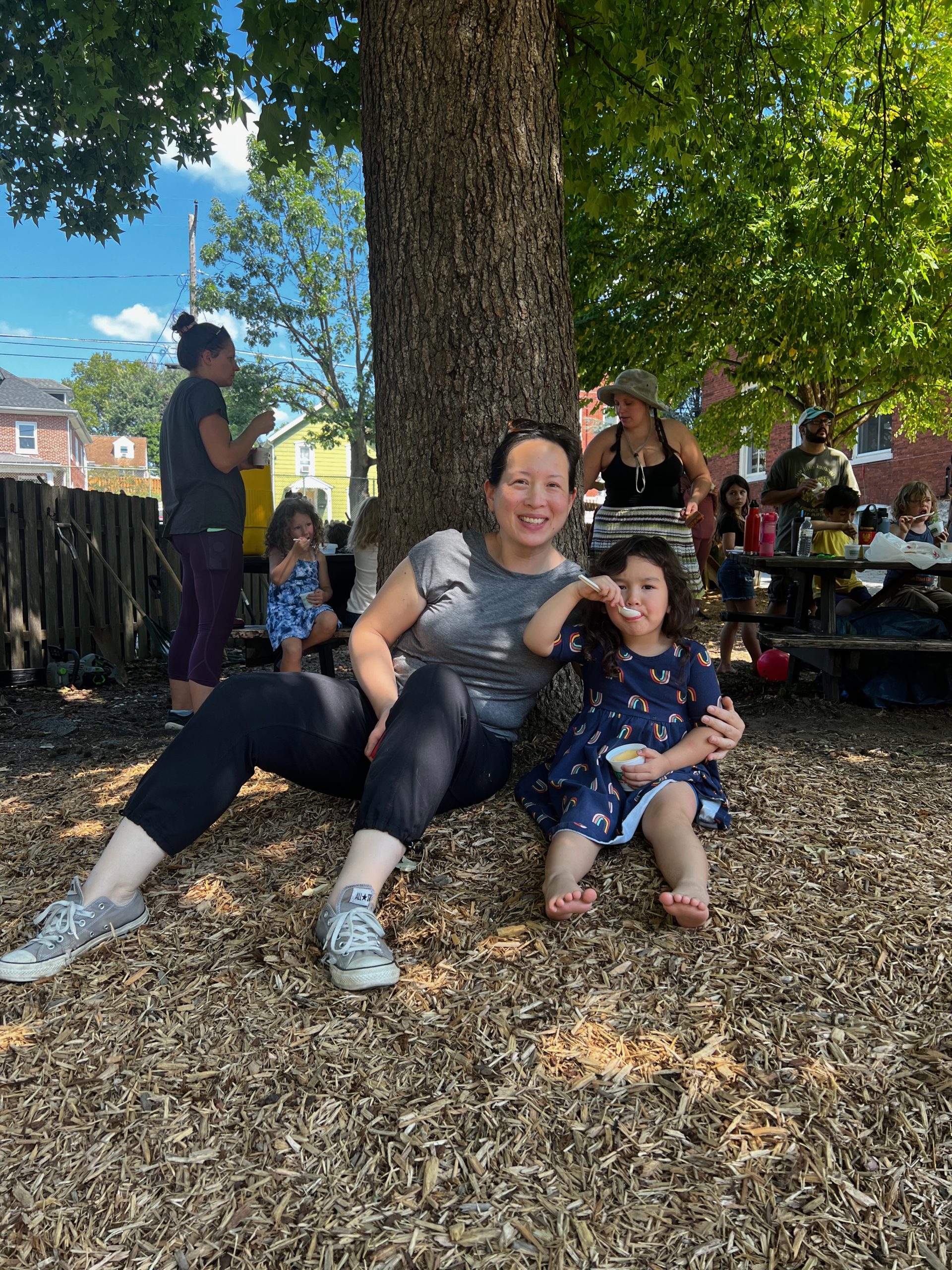
SWS families, teachers, and staff came together on the last weekend in August for SWS's annual playground cleanup day. There were alums painting playground structures, families weeding, and students getting some much needed social time after a summer apart. Everyone pitched in to make our playground ready for the school year! The day ended with Italian ice and popsicles thanks to Mrs. McIntyre.
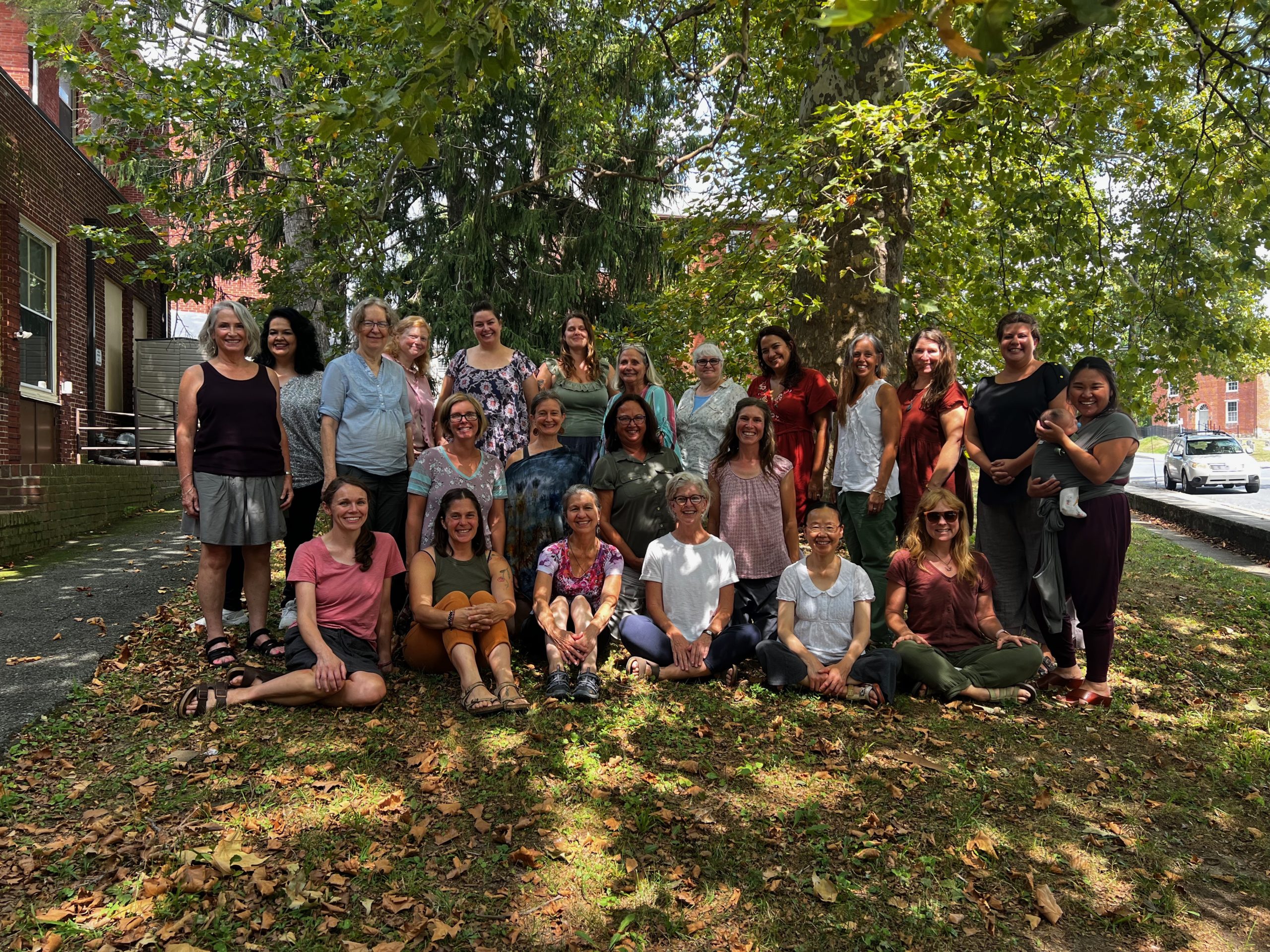
A couple days later, SWS teachers and staff gathered for Back to School meetings in preparation for the school year. Everyone participated in a "Contextualizing Curriculum" workshop with Alma Partners, where faculty and staff discussed anti-bias education, wrote "Where I'm From" poems, and planned for the next workshop in October, during which faculty will delve into how to create more diverse and inclusive curriculums. Faculty members discussed the summer training they participated in focusing on such areas as preparation for the grades, painting, singing, woodworking, World Languages and Healing Arts. It was three fun days of learning, singing, discussion, and even charades! All agreed that it was great for everyone to be back together again.
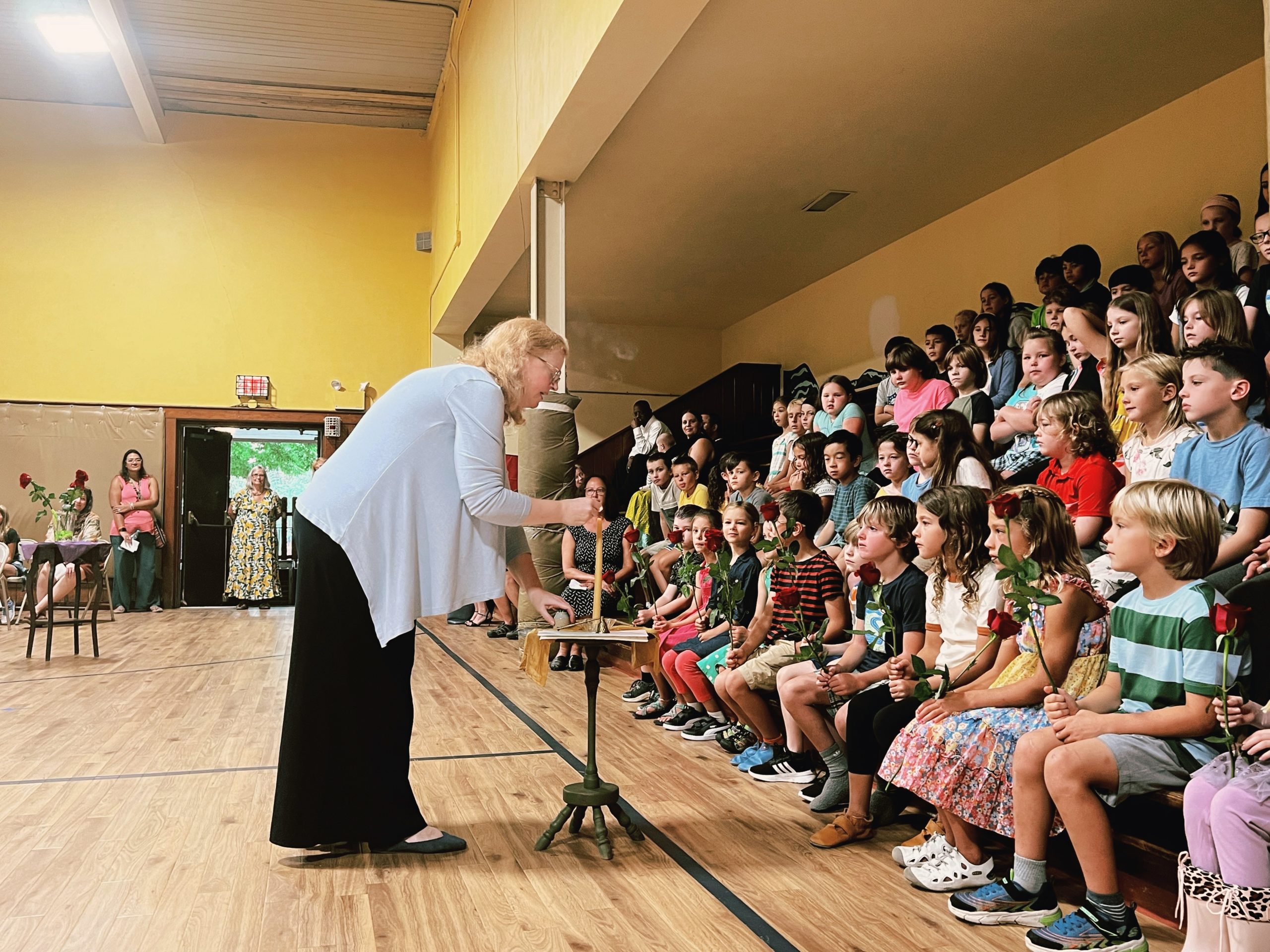
On September 6th, it was time for school to officially begin! Parents and caregivers were greeted by members of the SWS Parent Guild with coffee, tea, and snacks which provided a wonderful opportunity to welcome new families and reconnect with returning ones. The first graders eagerly waited with their class teacher, Mrs. Larson, until the moment their Rose Ceremony would be celebrated. Ms. Tucker, the eighth grade teacher, and Miss Tabea, an Early Childhood teacher, greeted the crowd in the SWS gym with the first lines of a welcome song and were soon joined in song by all the faculty and staff. Afterwards, Ms. Tucker introduced Mrs. Larson to an appreciative audience and the moment had then arrived for the first graders to walk across the Rainbow Bridge to receive their roses and enter their new world as grade students. Mrs. Larson called each student one by one and each was led to the Rainbow Bridge by their kindergarten teacher. Mrs. Larson shook their hands on the other side of the bridge, and their 8th grade buddies greeted each one with a red rose, the petals of which symbolize the journey they are each beginning as first graders. When the eleventh student received her rose, Mrs. Larson introduced the Class of 2030 to much applause! Sitting together and listening intently to Mrs. Larson, the children received a story which illustrated the beginning of their journey (pictured above). Welcome to the class of 2030 and the 2022-23 school year!
35th Anniversary Spotlight: Teacher and Alum Parent Barbara Freiberg
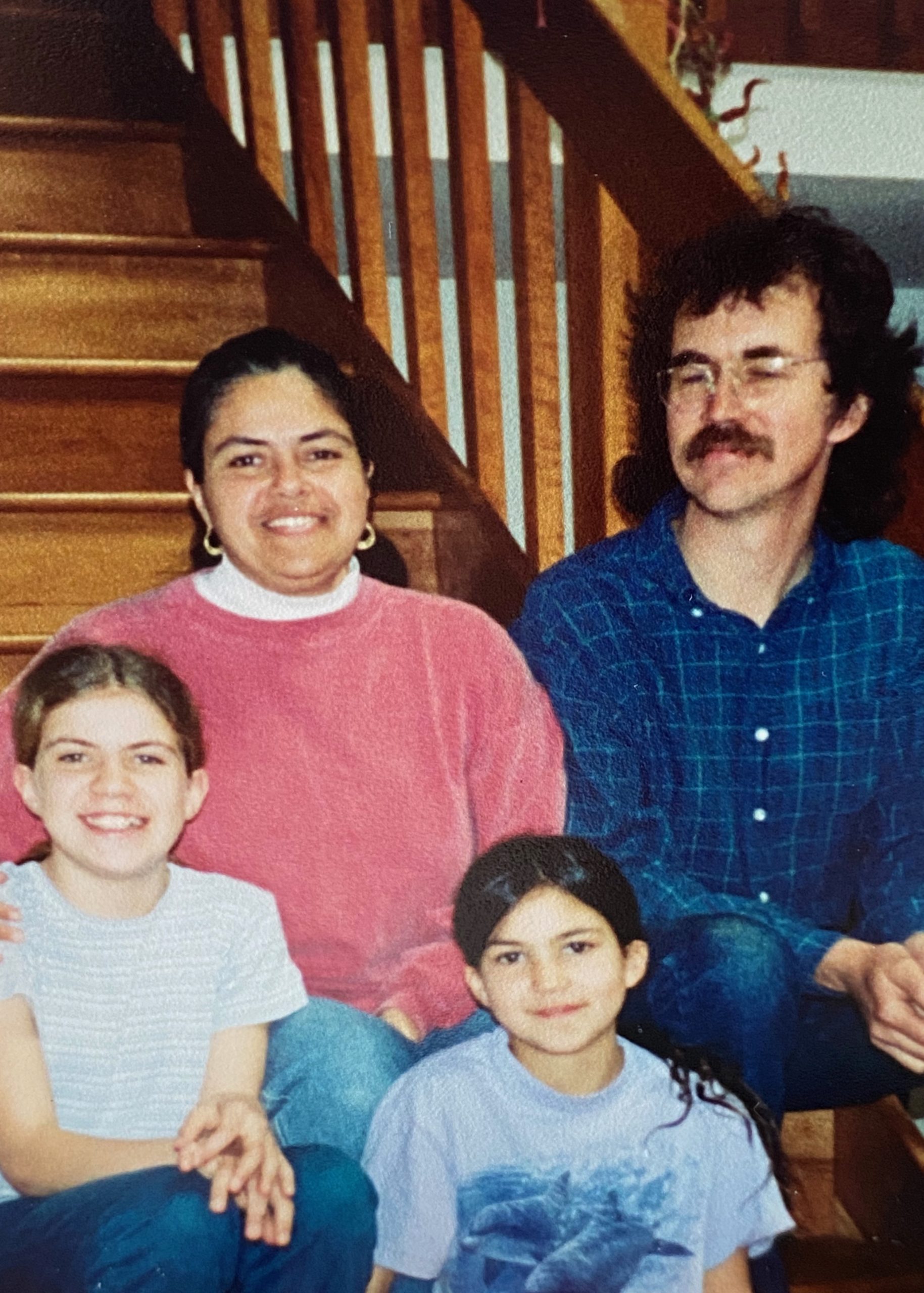
We are celebrating 35 years of Susquehanna Waldorf School this year! In honor of our 35th anniversary, we’re interviewing members of our community to share why they love SWS. Former teacher and alum parent, Barbara Freiberg, sat down with us to talk about her time at SWS.
On her many roles at SWS...
I arrived to Susquehanna Waldorf School as a parent in the 90s. After being there for a year, I started working with Miss Linda as a Kindergarten Assistant. I had worked at Sunday School churches but working in Waldorf education was different. I ended up in a lot of different roles at SWS over the years. I taught afternoon care and just loved it. We’d have spaghetti and play until their parents could pick them up at 6pm. I wanted to learn more about Waldorf education so I studied eurythmy, painting, administration, and handwork. I was the receptionist for a couple of years before we had an intercom system. So I answered the phone and had to take it to the office. That took patience and it was sweet. I always really loved working with the children, though. They always find a way to be creative.
I worked at SWS off and on for 25 years. There was always something to come back to. The beauty of the building and the people brought me back. I learned so much at the faculty meetings. We were given so many tools to process the work we were doing. We studied anthroposophy. There was beauty in the education for our students, but also for everyone who worked there. There are talented people at SWS. They have that little something extra.
Why Waldorf?
We loved the curriculum at SWS. I was first introduced to Waldorf education at an exercise class I used to teach. A couple came in and started talking about SWS. How they presented their curriculum artistically: chalkboards, students writing their own books, teachers wrote their own plays. My husband knew about SWS from an independent newspaper. We visited and the environment really caught our attention. My husband loved that there was no plastic. He came home and threw away all of our tupperware. There was a nature play table and the teacher made it so fun and magical. I saw how lively these very basic stones and sticks could become. How they became toys but with reverence and respect.
Studying all of the world’s religions was really important to us. I was Catholic and my husband’s Lutheran. They studied religion as a philosophy and it kept our children very open minded. We traveled a lot and loved that Dela studied German and French. It’s a worldly curriculum. They had a lot of cooperative games. They were exposed to healthy foods in Kindergarten, which created a really good foundation for us as a family.
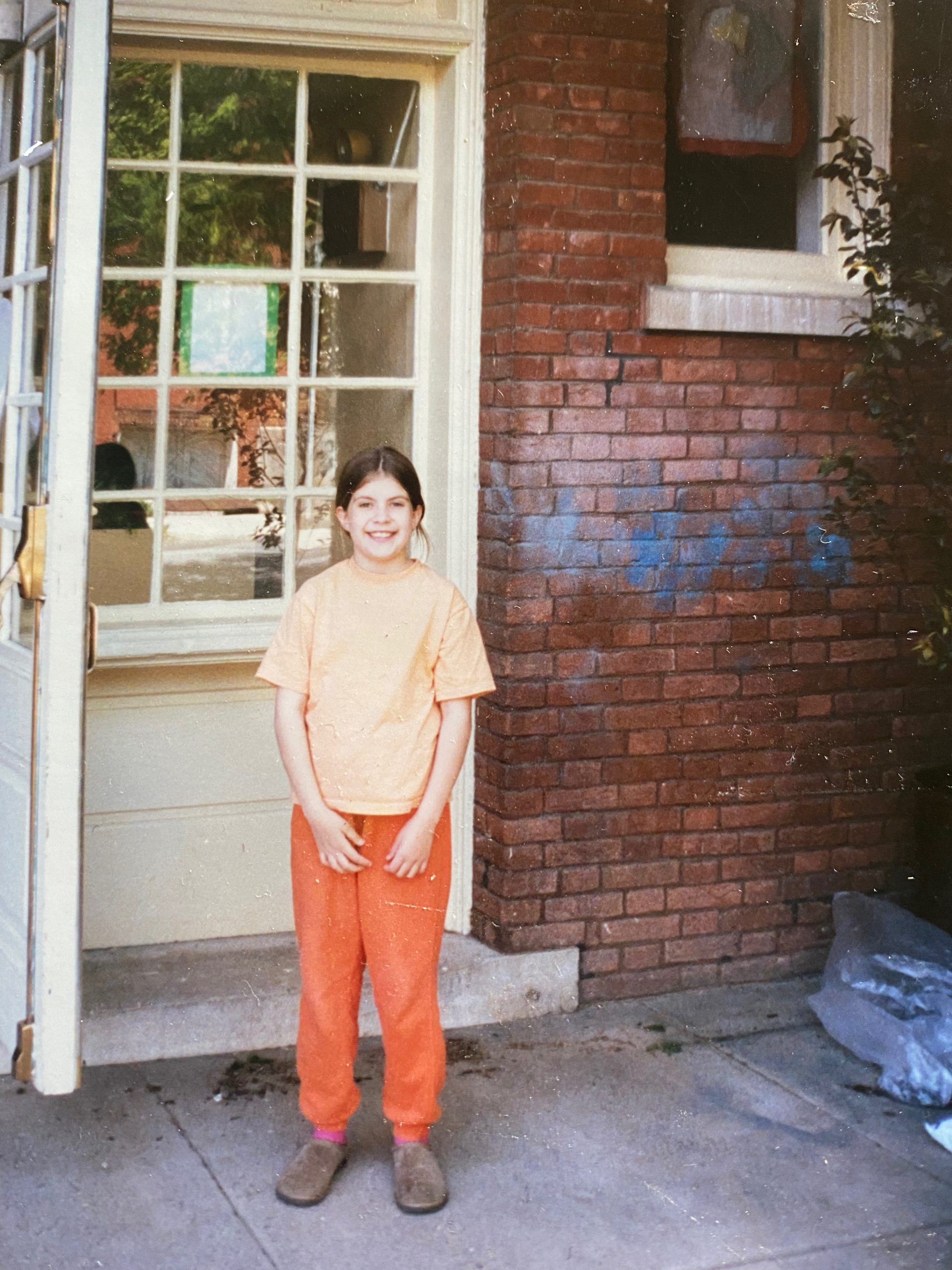
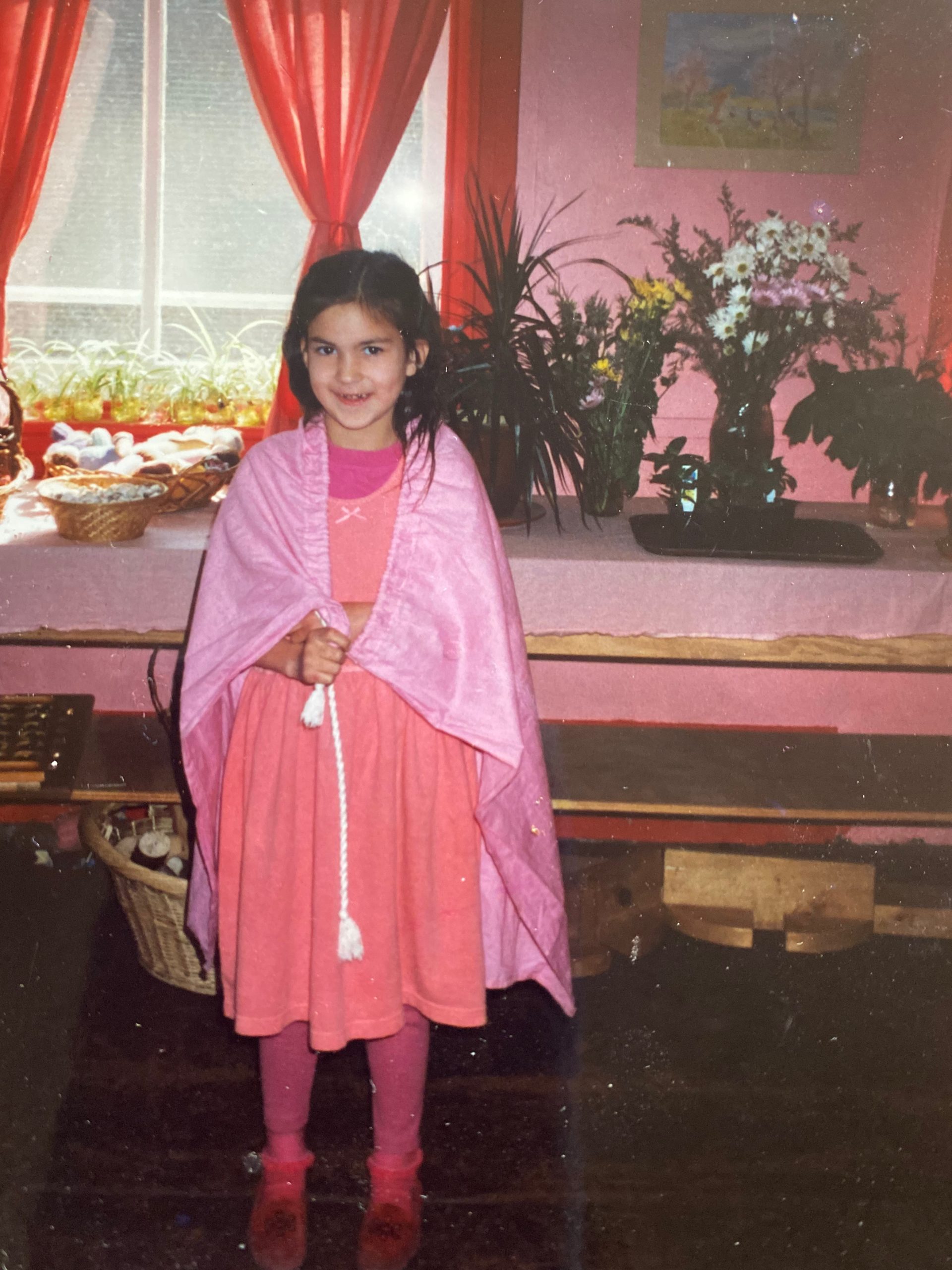
Favorite Memories?
The best days were all of the days. I can’t think of any bad days, I really can’t.
I remember this day. It was Three Kings Day and the fire alarm went off. There were three fire trucks at the school. “Oh my god, it’s Three King’s Day, look at the three fire trucks! The kings are here! The kings arrived!”
It’s been sweet watching my grandchildren go to school there. My children are 35 and 33 and they have children now. It’s comforting to see where they are. Students come out of the school with so many life skills. The languages, music, and handwork.
What does a SWS education mean to you and your family?
Waldorf education formed my family. Before our children started at SWS, we didn’t know many people here. We didn’t have much community. The people were so friendly at SWS. There were potlucks and other events to meet people. I made some dear friends who I’m still friends with today. We went on trips together. Our children are in their mid-30s now but we’ve stayed friends.
We enjoyed bringing culture and music into our home. Dela really loved the flute. Waldorf really helped with healthy food choices and brought more conversations around our dinner table. All of that was reinforced by me working at the school. As a teacher and employee, I really needed to walk the talk. We were caring for everything around us and that was lovely. I brought that into my home. We had a lot more care for things. You end up with a lot of rocks in your house. It was just great.
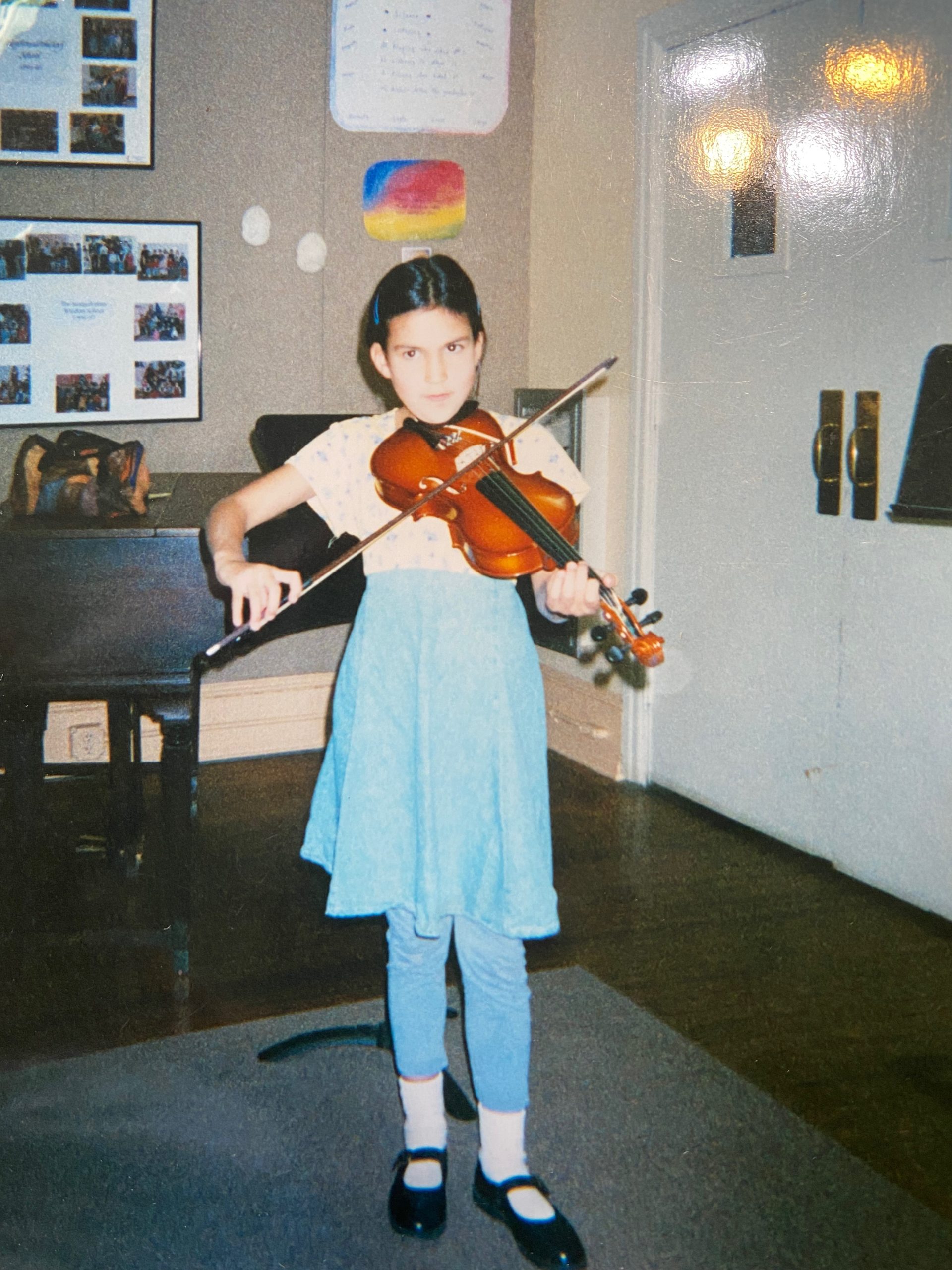
What makes SWS special?
Those wooden floors are beautiful. The old brick building. The river, the parks, and the walk. It’s a village. The people that are there make it so special. I’ve seen people come and go over the years but the people who work there are sincere in wanting to teach. The community that the teachers and staff build is reinforced by a common ground of study. Not what they teach the children but what they study in faculty meetings. It makes them a unit.
SWS has been good to us and now it’s being good to my grandkids. It’s a well-rounded education with exposure to so many different things. It’s three dimensional. I always hope it will be here. I always hope there will be Waldorf education in the Susquehanna Valley.
Third Grade Farming Trip
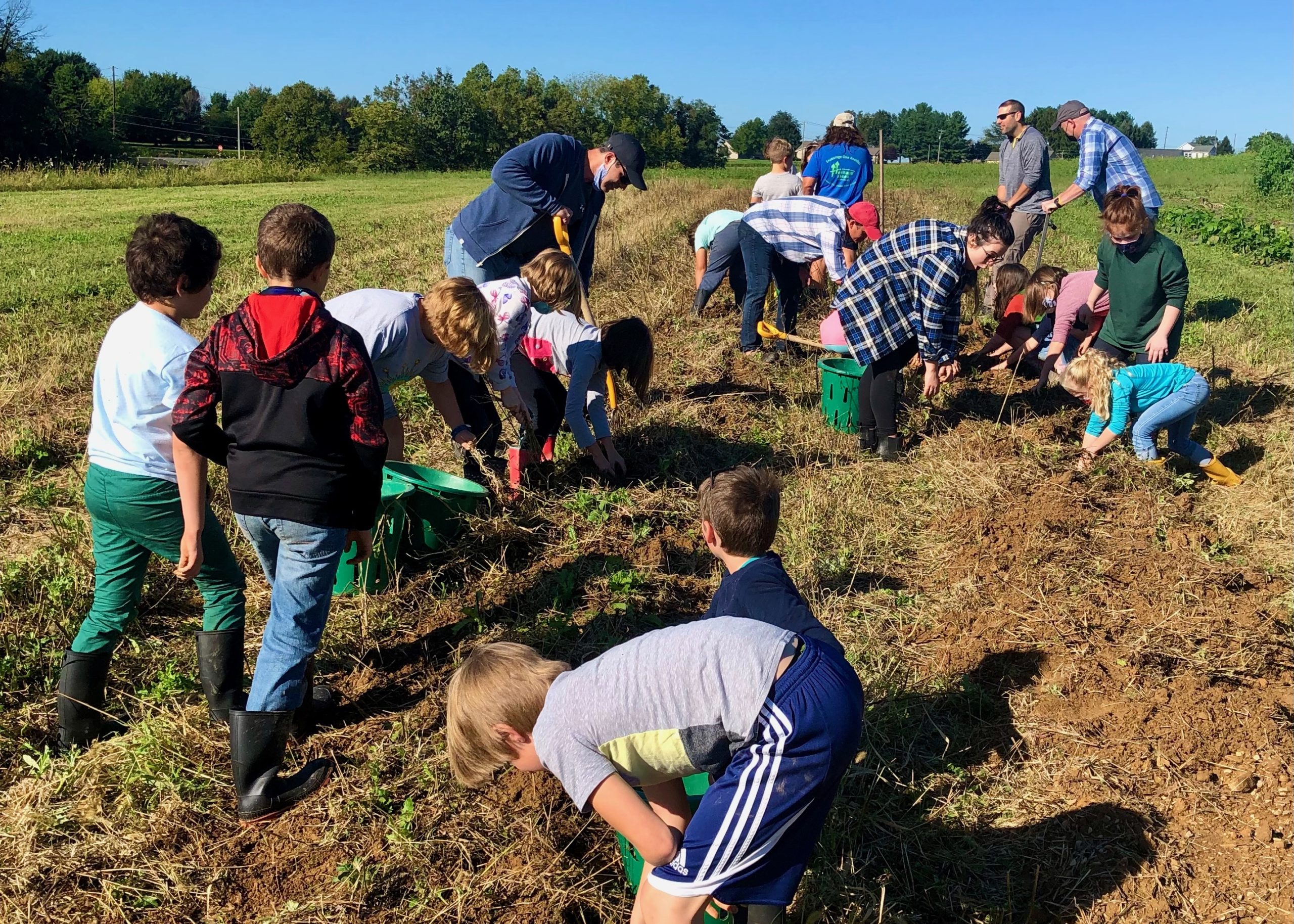
Written by Class 4 Teacher, Melissa McIntyre
In third grade at Susquehanna Waldorf School we are fortunate to partner and participate in farming skills with local farms. The ability to get our hands, feet, faces, and whole bodies actively working with the earth beneath our feet, as a means of sustaining ourselves by cultivating our own food, is perhaps some of the most grounding work we can do as human beings. This is especially true for the third grader who is starting to discover their own independence and their own place in the world.
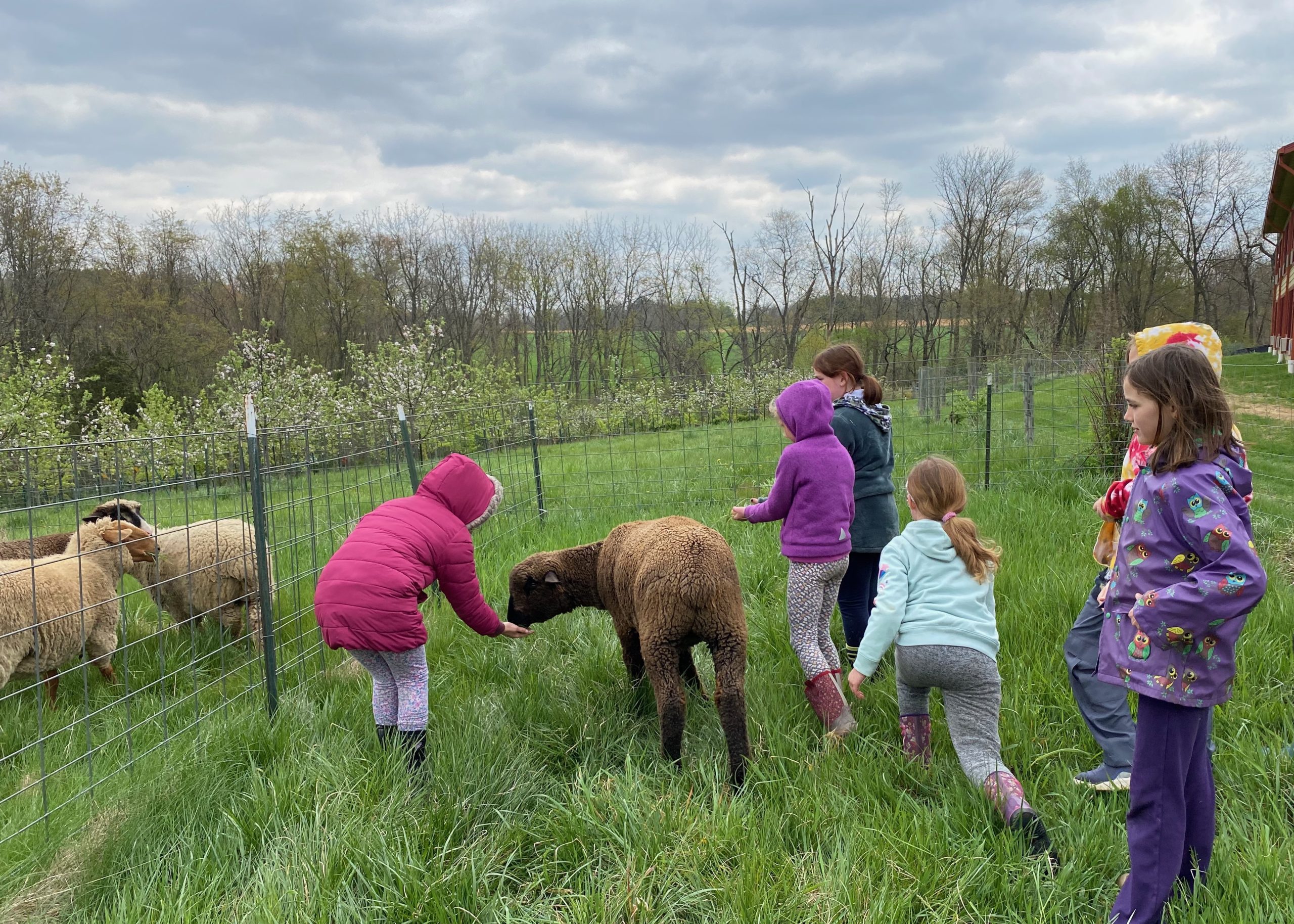
The developmental phase that third graders experience is called the "nine year change" and practical activities such as planting, harvesting, and animal care provide purposeful work that help the third grader feel part of the world around them. All of these lessons and activities lead to the culminating event of the year, the Third Grade Farm Trip.
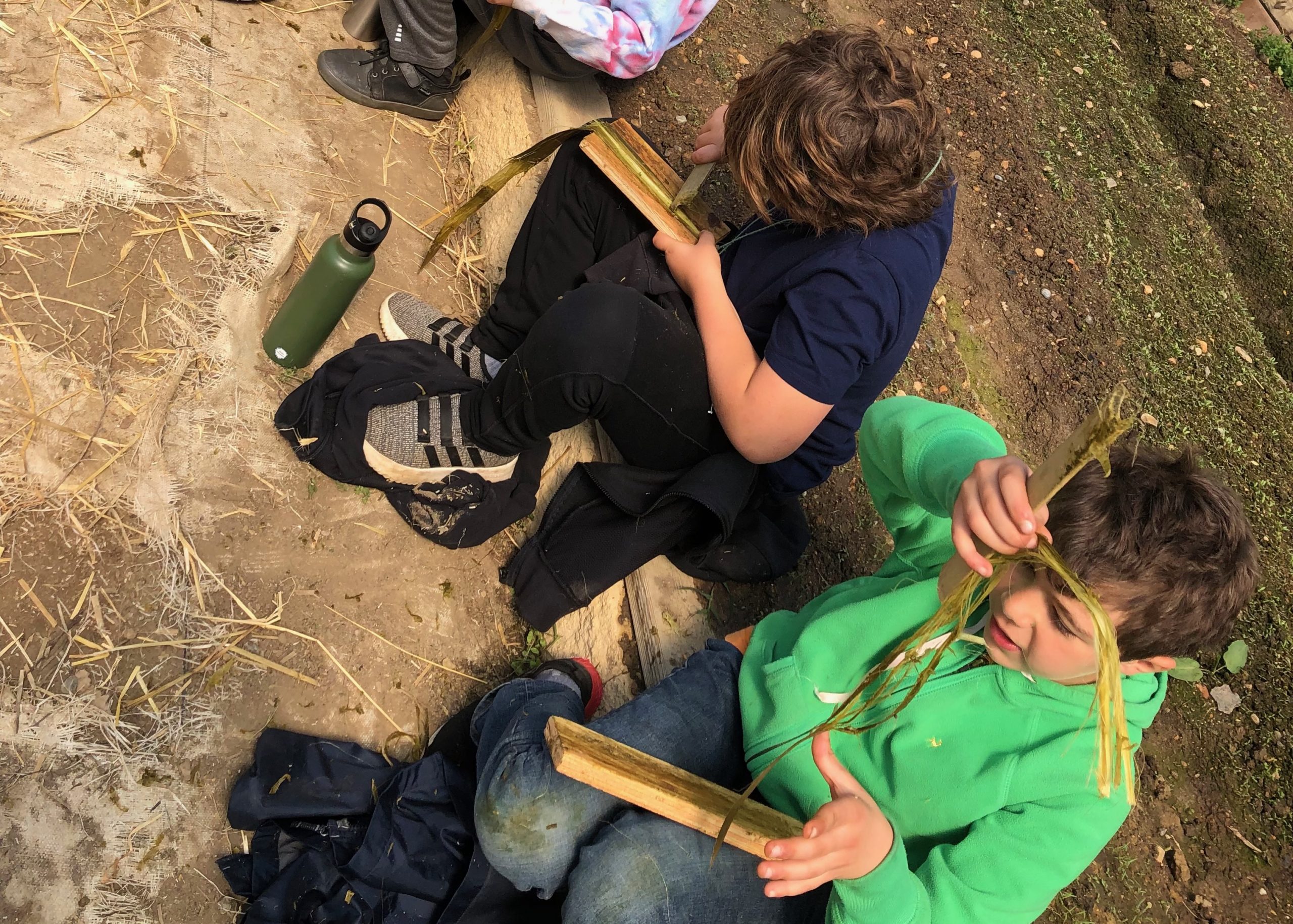
The Third Grade Farm Trip is a rite of passage as the class goes away for several days to work on a farm. Third graders visited Pearlstone Center in Maryland for their 21-22 farm trip. For many students it is their first time away from home and the trip provides concrete experiences for them to test their "how to" knowledge and support their healthy, growing independence. Students made cords from Yukka plants, built their own shelters, spent time with animals, planted tomatoes and peppers, and enjoyed campfires.
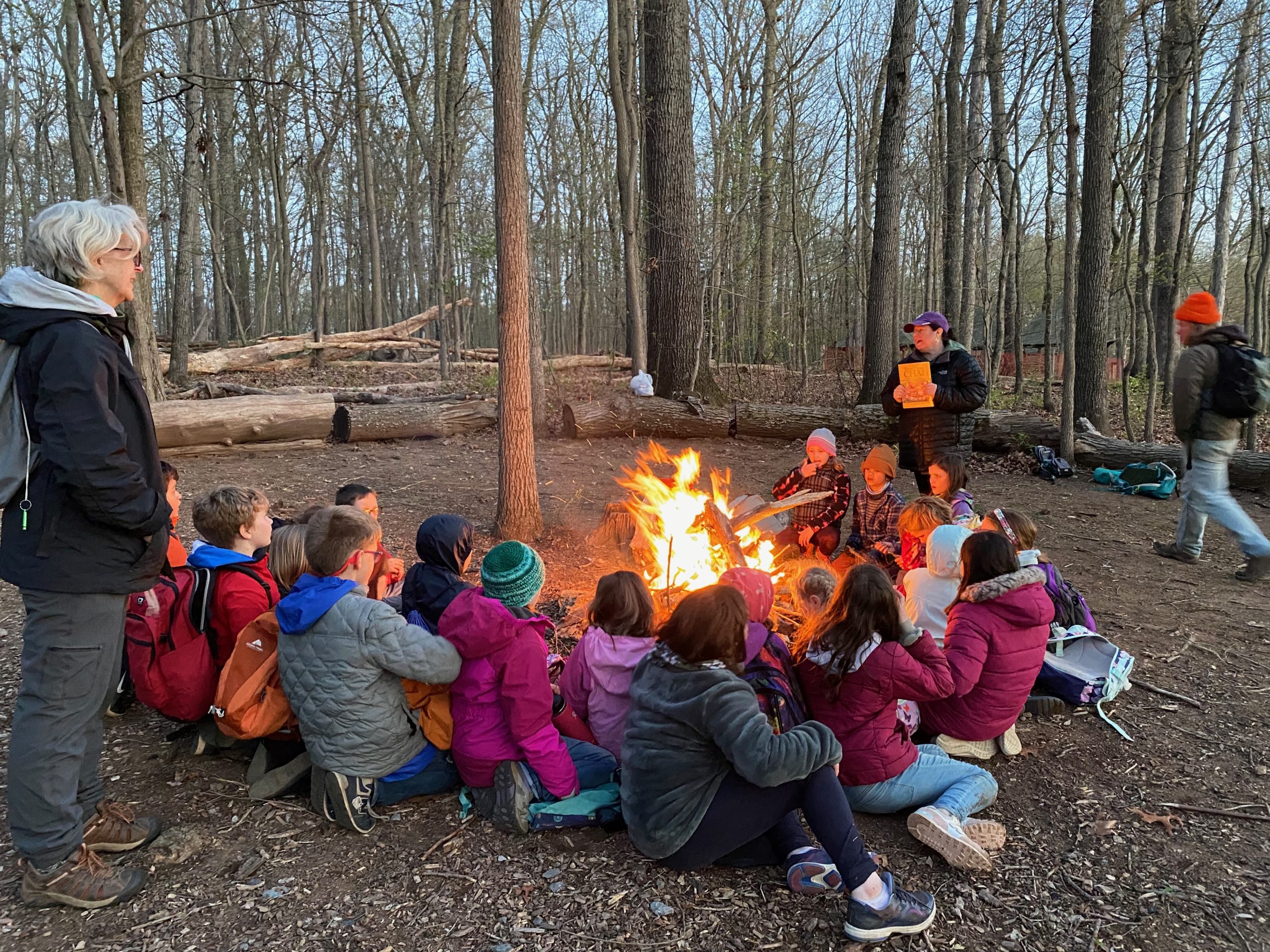
Special thanks to Heritage Creek Farm Camp and the Pearlstone Center for providing such wonderful education opportunities for our students!
A Glimpse into Stepping Stones in Springtime
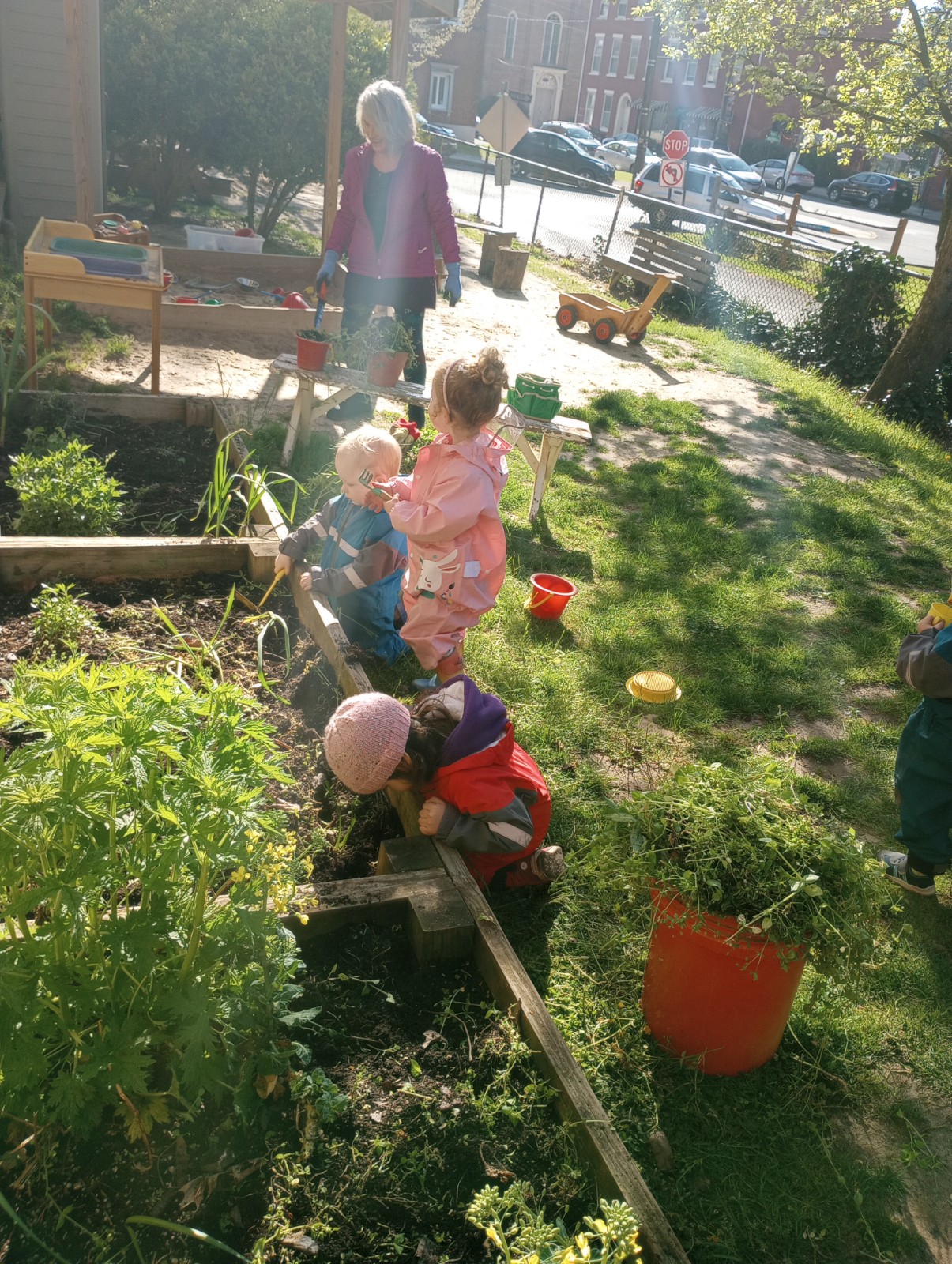
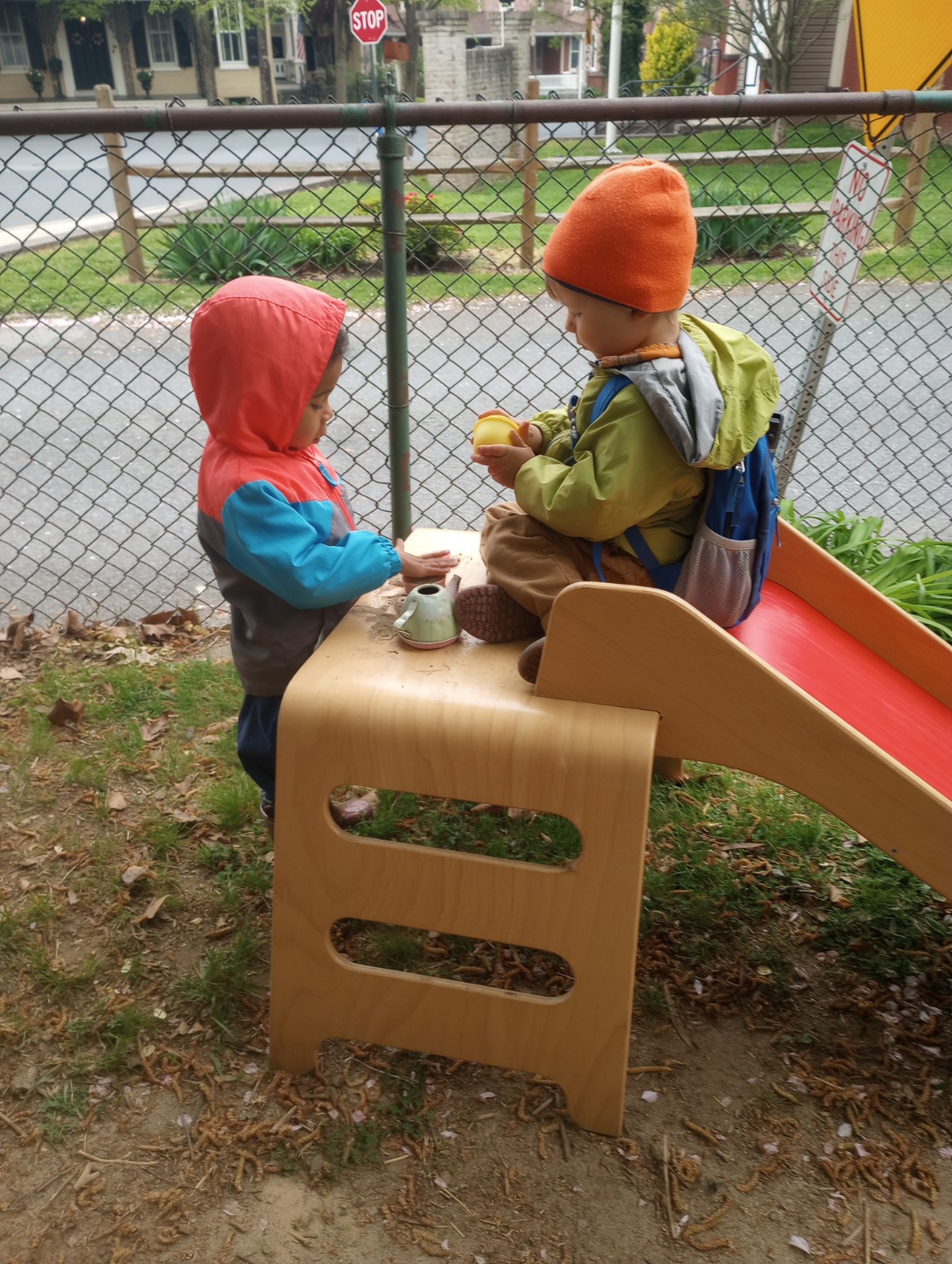
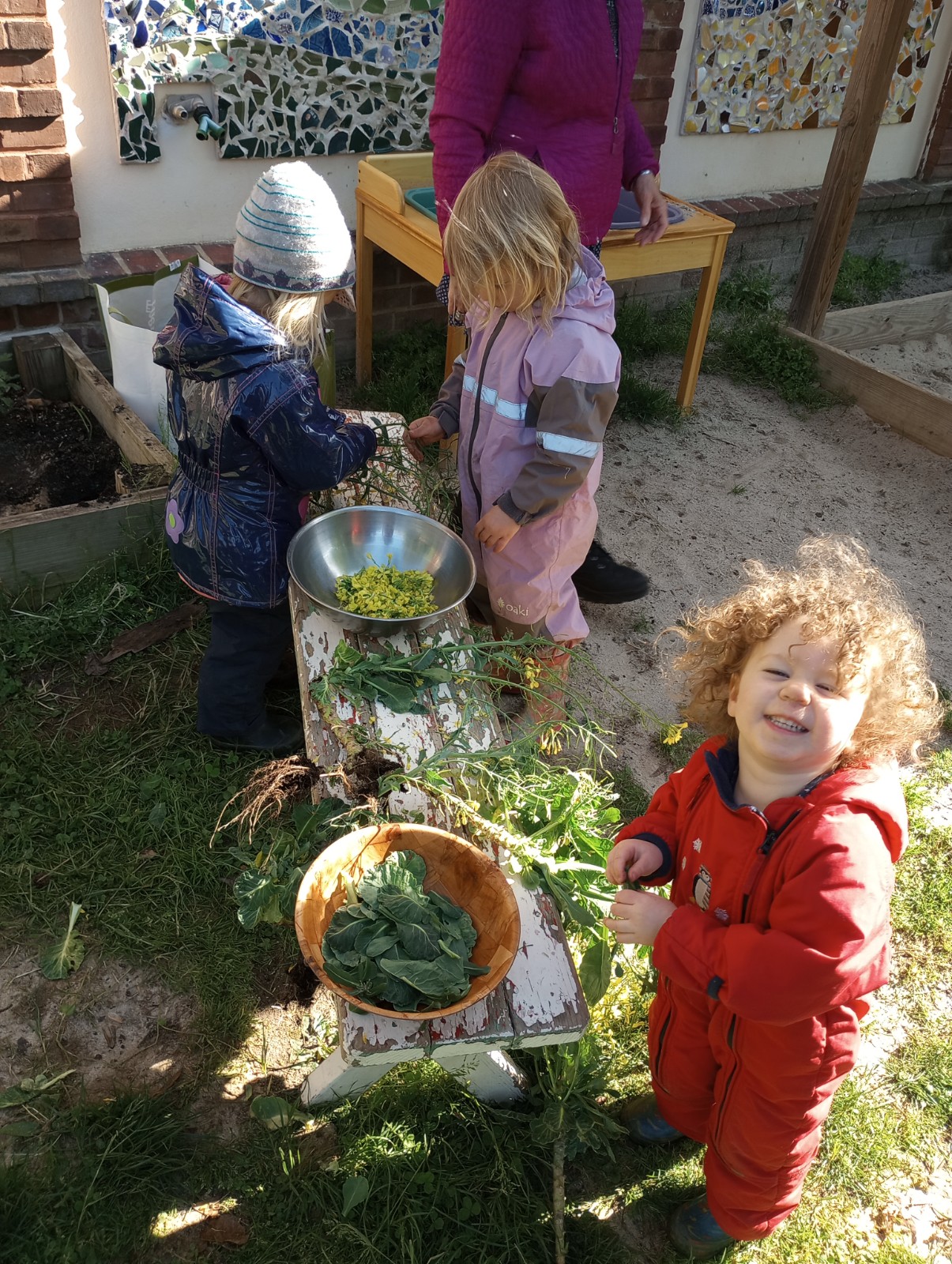
Written by Stepping Stones teacher, Tabea Steinbesser-Fitz.
What better way to start each school day than being outside on our little playground behind the school, enjoying the warm sunshine, or even spring rain splashing in our faces? Our Stepping Stones children were very busy the last few weeks of school with planting our garden boxes with plants we can harvest in the fall when school resumes: ground cherries, kale, snack peppers, garlic, potatoes, lavender, parsley, and marigolds for the silk-dyeing of our "golden capes of courage" for Michaelmas. The children loved digging in the soil and finding earthworms and other critters, and of course, watering the plants (while often getting wet themselves!). We were overjoyed that many sunflower seeds which we had peeled from large wilted sunflower heads in the fall and sprinkled along our garden fence came up all over the yard. We fenced off an area for our "sunflower garden" to grow.
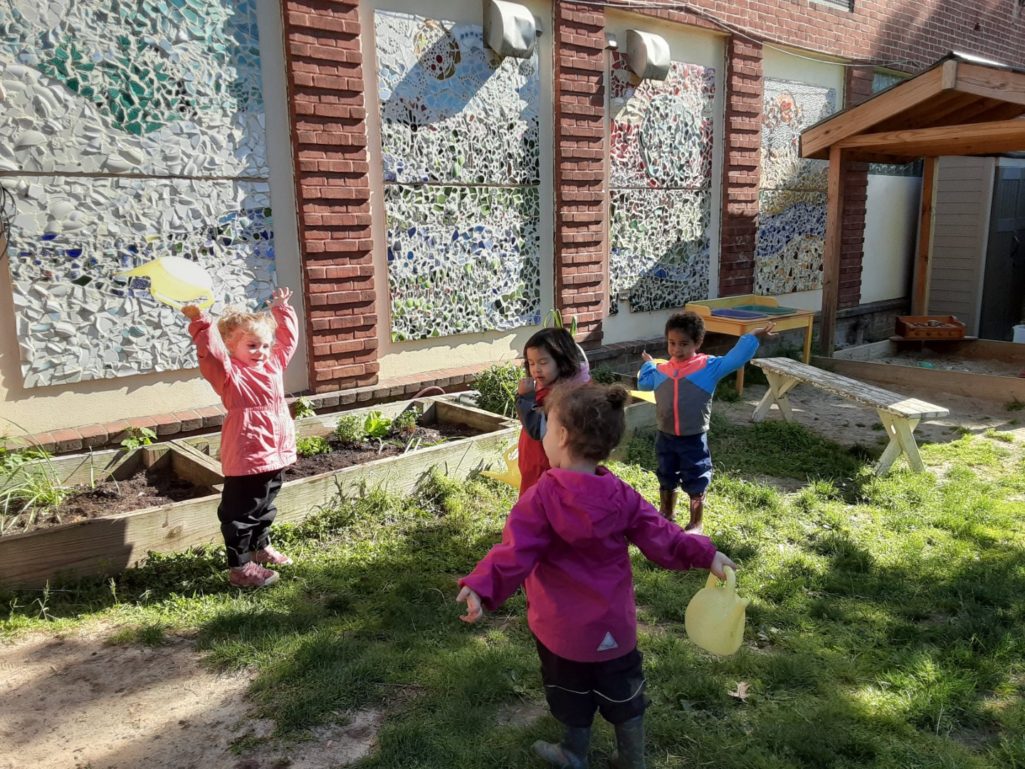
Our big round swing was the most beloved place to hang out, with lots of laughter, giggles and singing songs, while others preferred baking birthday cakes and serving "hot ice cream", climbing over the obstacle stump course, or engaging in hide and seek games. We did our water coloring outside and created beautiful covers for the Stepping Stones Recipe booklets which were our Mother's Day gifts (also freshly baked scones).
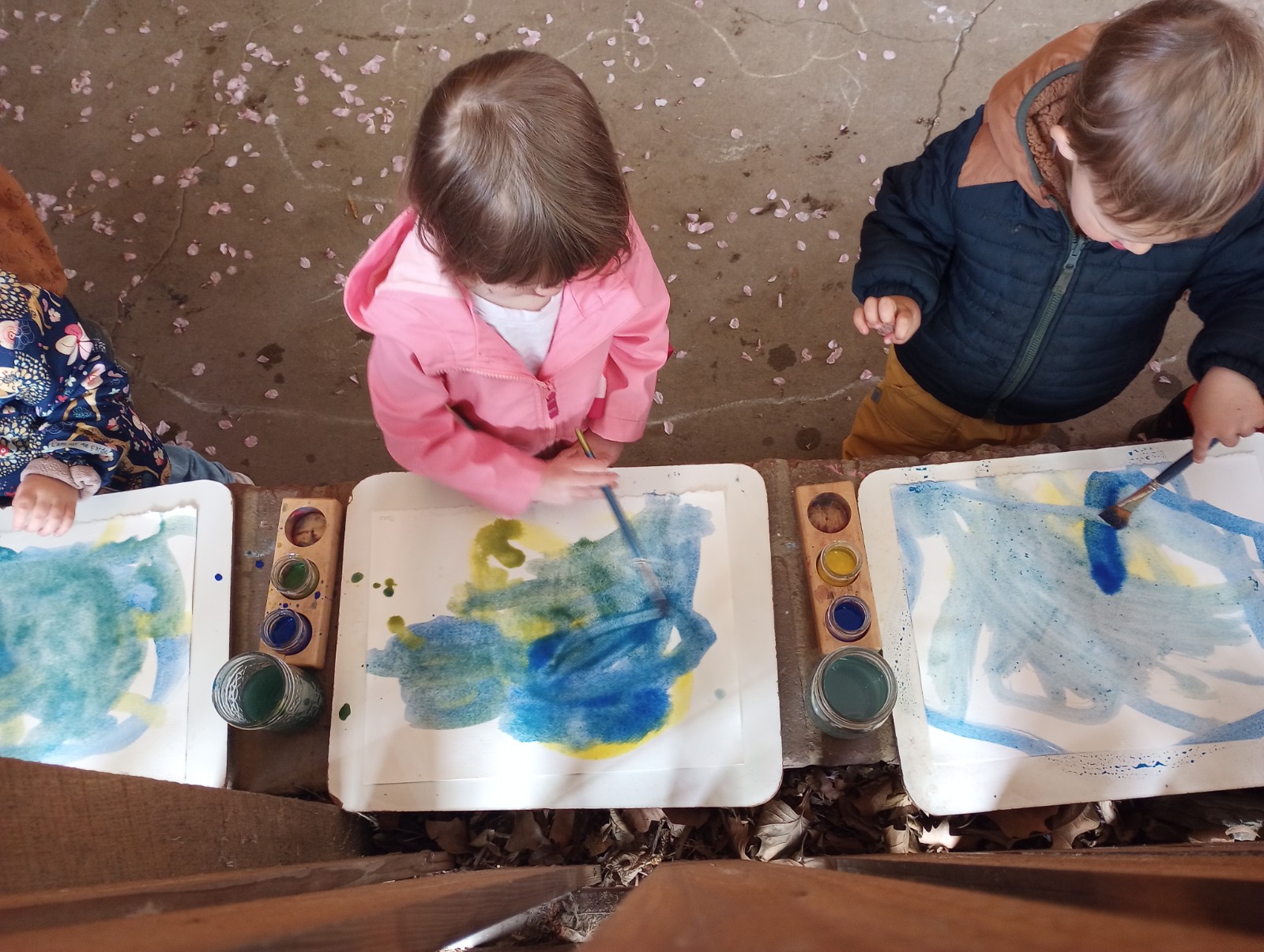
One day we noticed that a mommy and daddy bird had begun to build a nest in the hole of the school's brick wall using dried grasses and even pieces of yarn (only at a Waldorf School will birds find these useful treasures on the playground!). In the following weeks, we got to experience the nest building, the uncertainty of baby birds hatching, hearing the cheerful chirping sounds from the brick hole, and the busy parents flying in and out to get food. We got to witness the little birdies taking their first flights over our playground!
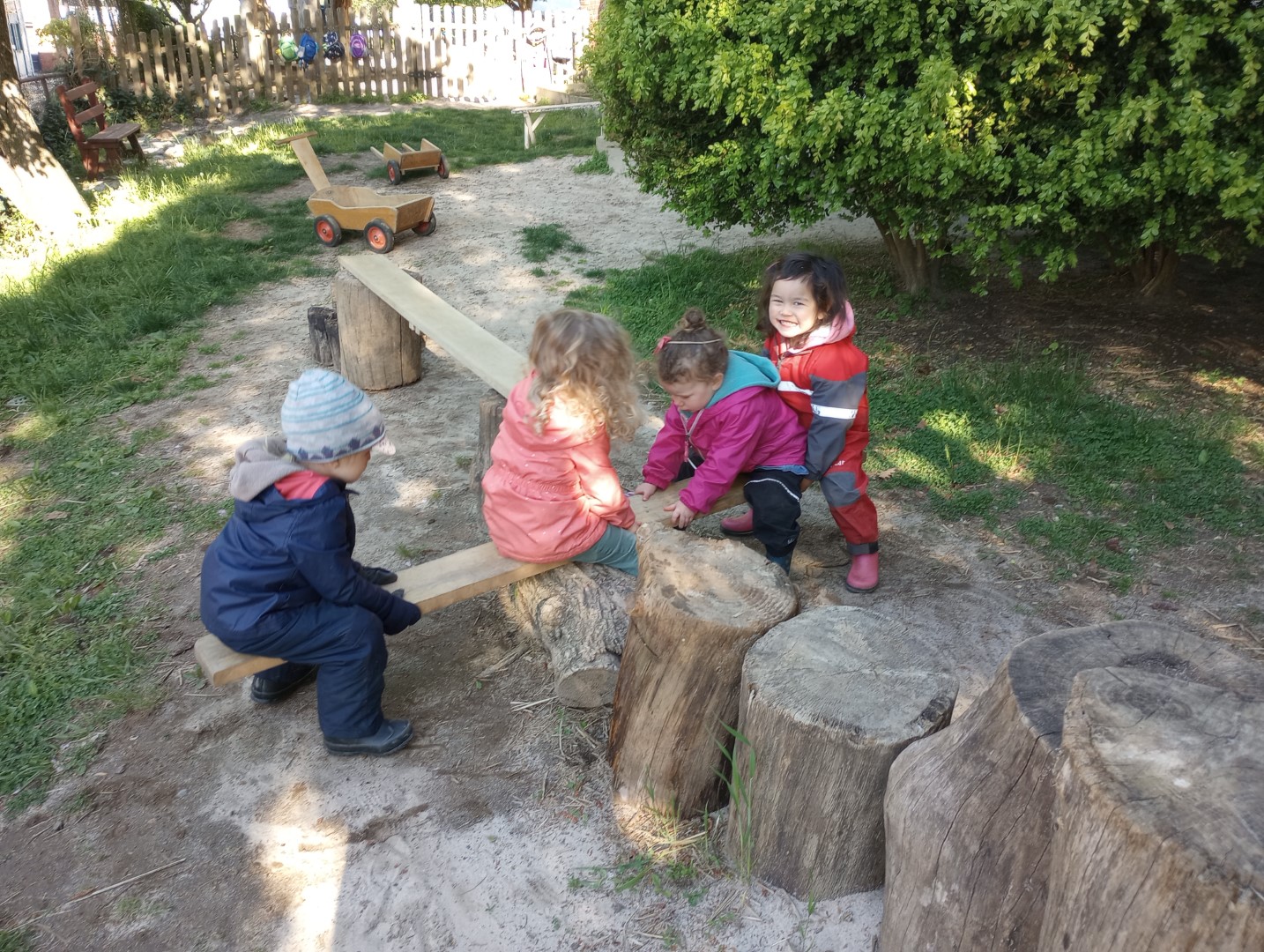
Inside the classroom, the children became experts over the course of the year in building large obstacle courses across the whole room as well as hide-outs created with play stands, sheets as roofs, stumps and chairs and doors, and sheepskins, silks, blankets, and pillows served as cozy beds. It was always busy in the play kitchen and our baby dolls, and even us teachers, were fed well. We stacked chairs lengthwise on the floor to build long trains and one of the stops was usually at Molly's Cafe. Our knitted barn animals and the big fuzzy momma cat were the most beloved toys in the classroom. They received so much love and care but also pulling and grabbing. When they got injured, the children wrapped them very carefully in silk and held them in their lap or hands until they got better again.
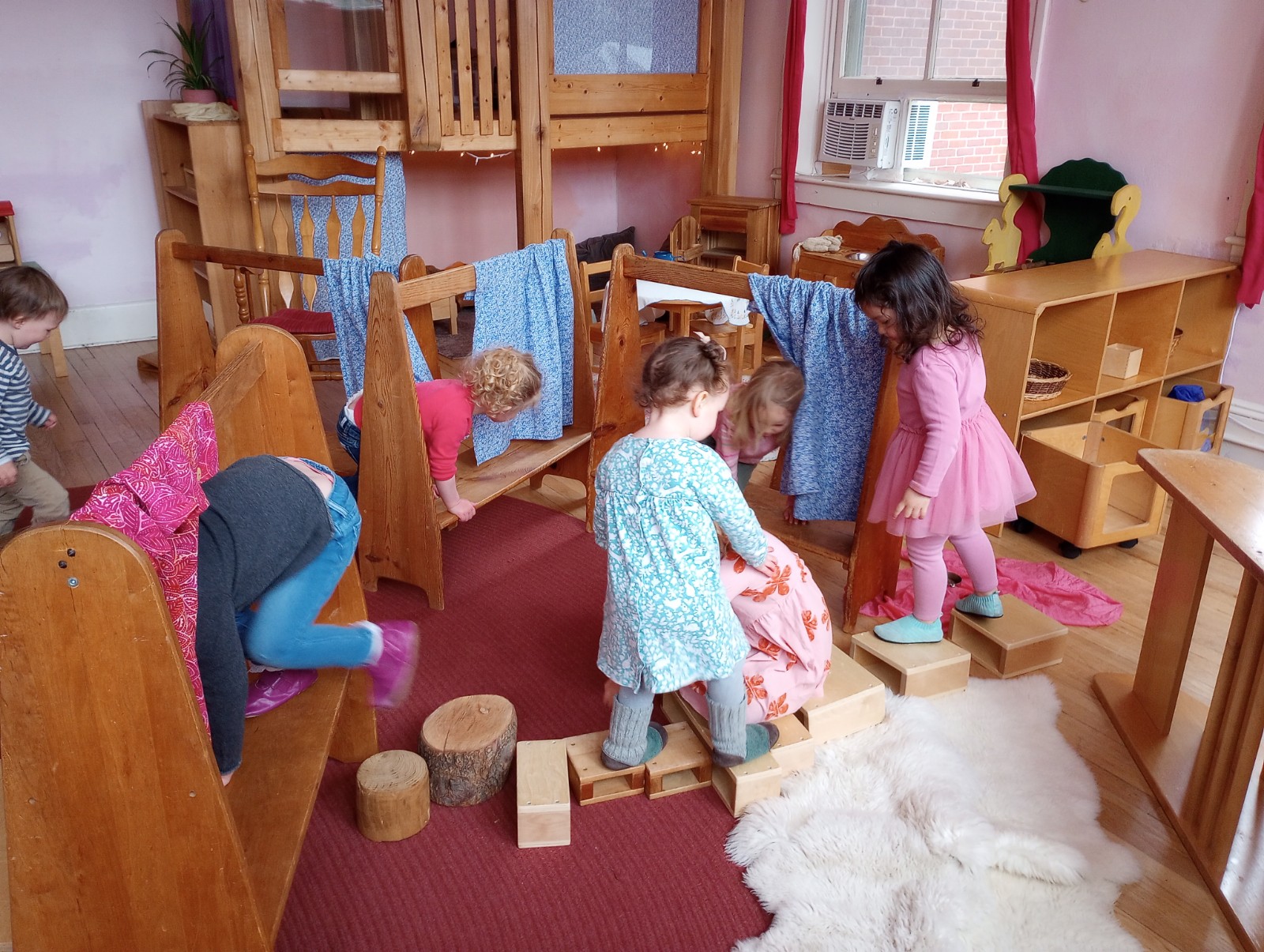
It can get bumpy during play sometimes. This is the age where everything speaks "mine!" to the 2 and 3 year olds. By the end of the year, the children developed a larger vocabulary, more patience, and some tools on how to use their words, and even began negotiating. These years are very important for developing first social and self-regulating skills.
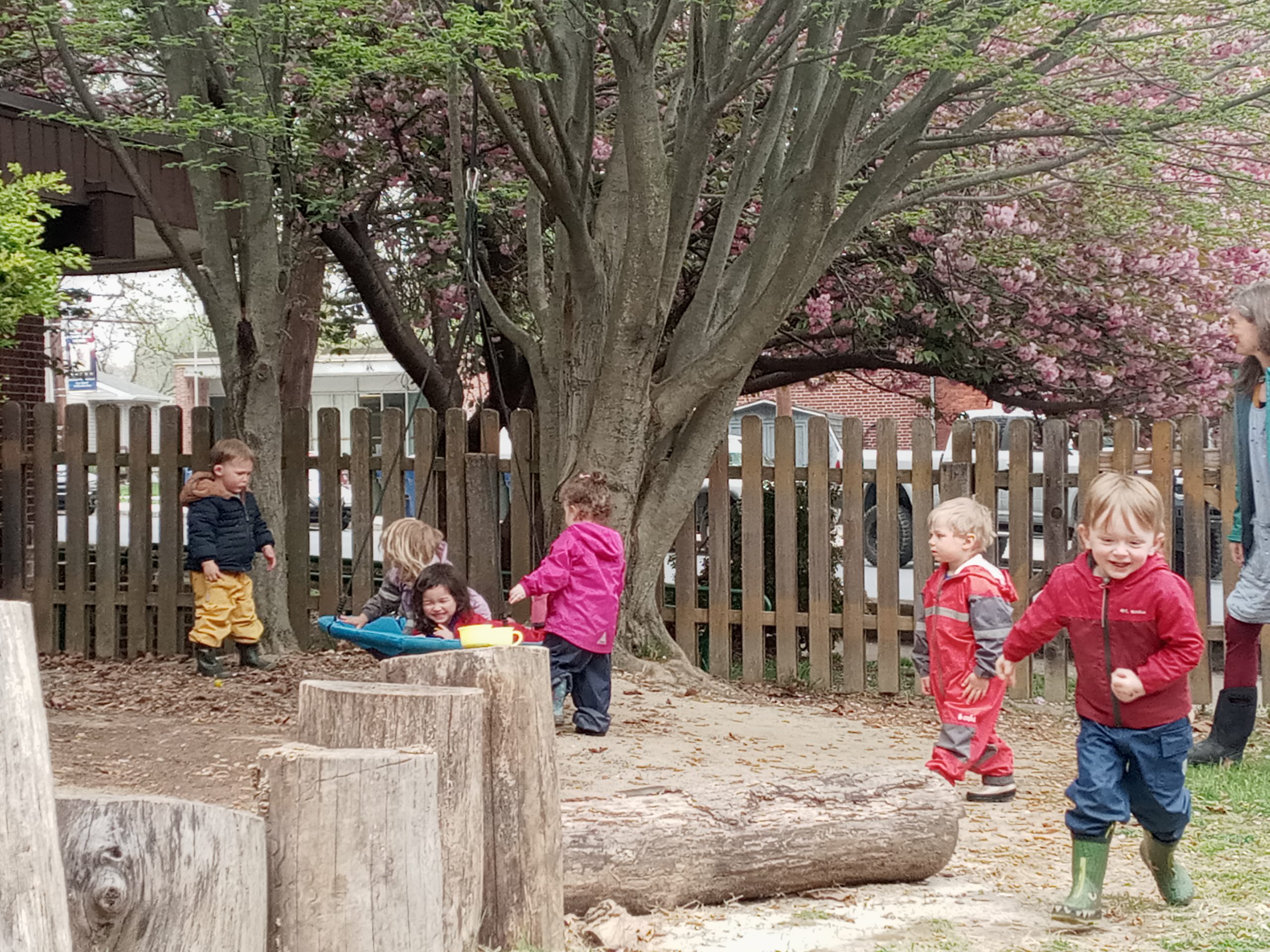
The best part is that the children have all developed such love for each other and often made their first friendships in school. It is such a joy to see spontaneous big hugs from the children (that sometimes lead to tumbling over). When we teachers get those hugs and a whisper "I love you!", then I know that all of my efforts in helping the children grow into compassionate, understanding, and kind human beings are absolutely worth it.
Congratulations SWS Class of 2022!
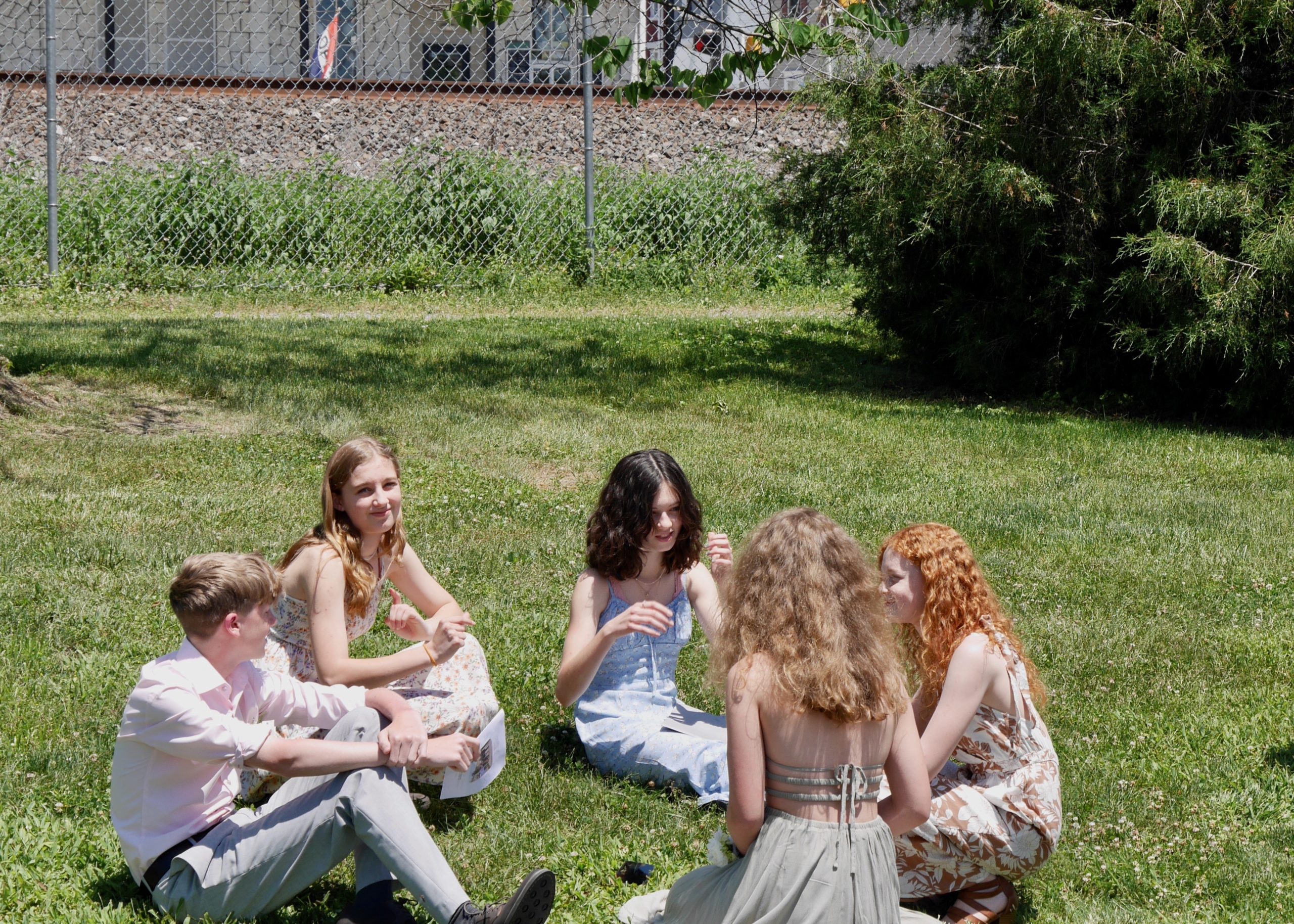
Graduation from the Susquehanna Waldorf School is a momentous occasion. Our small class sizes mean that most of our graduating students have been learning and growing together since first grade. For the class of 2022, most have been together since pre-K. They lamented this spring, “We’ve been at this school for our entire lives. How can we leave??”
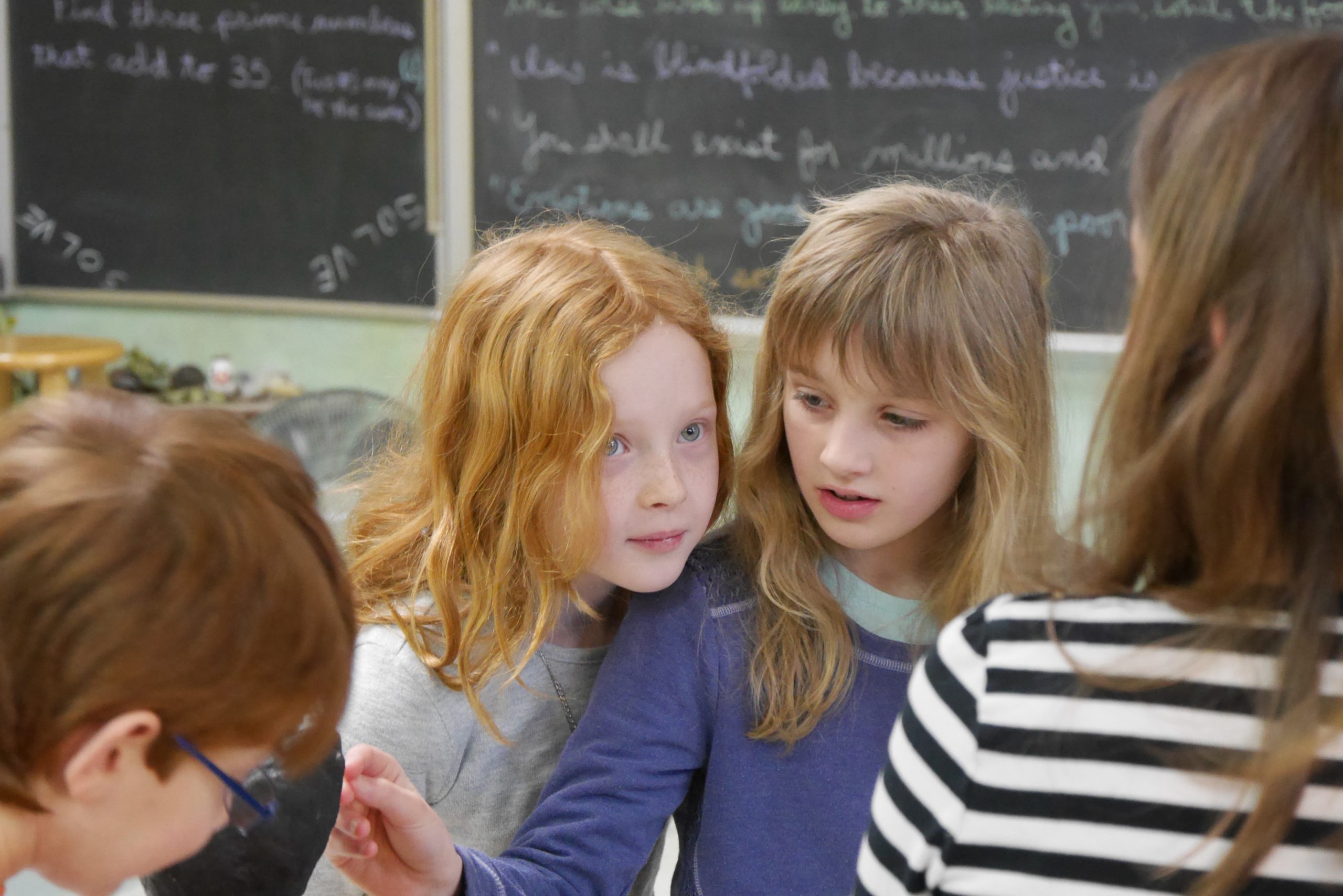
As the end of the school year approached, 8th graders went on their class trip to Florida and performed their last Waldorf school play. Both are significant parts of Waldorf education. The 8th grade class trip is a time to honor the years they’ve spent together and it marks their transition into high school. 8th graders snorkeled with manatees, kayaked, went fishing, learned about local wildlife, and even wrote an original song about manatees, which they performed at graduation!
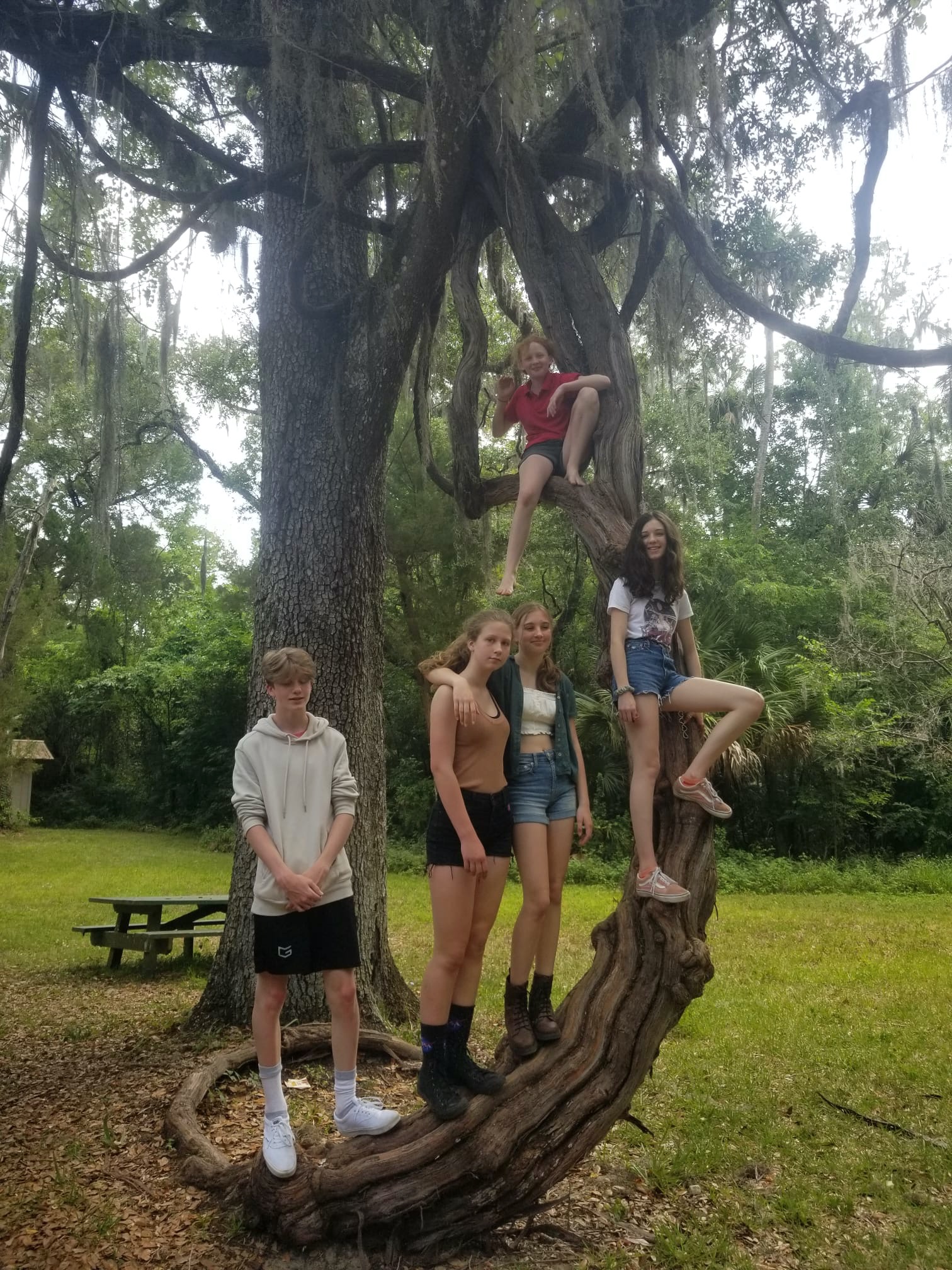
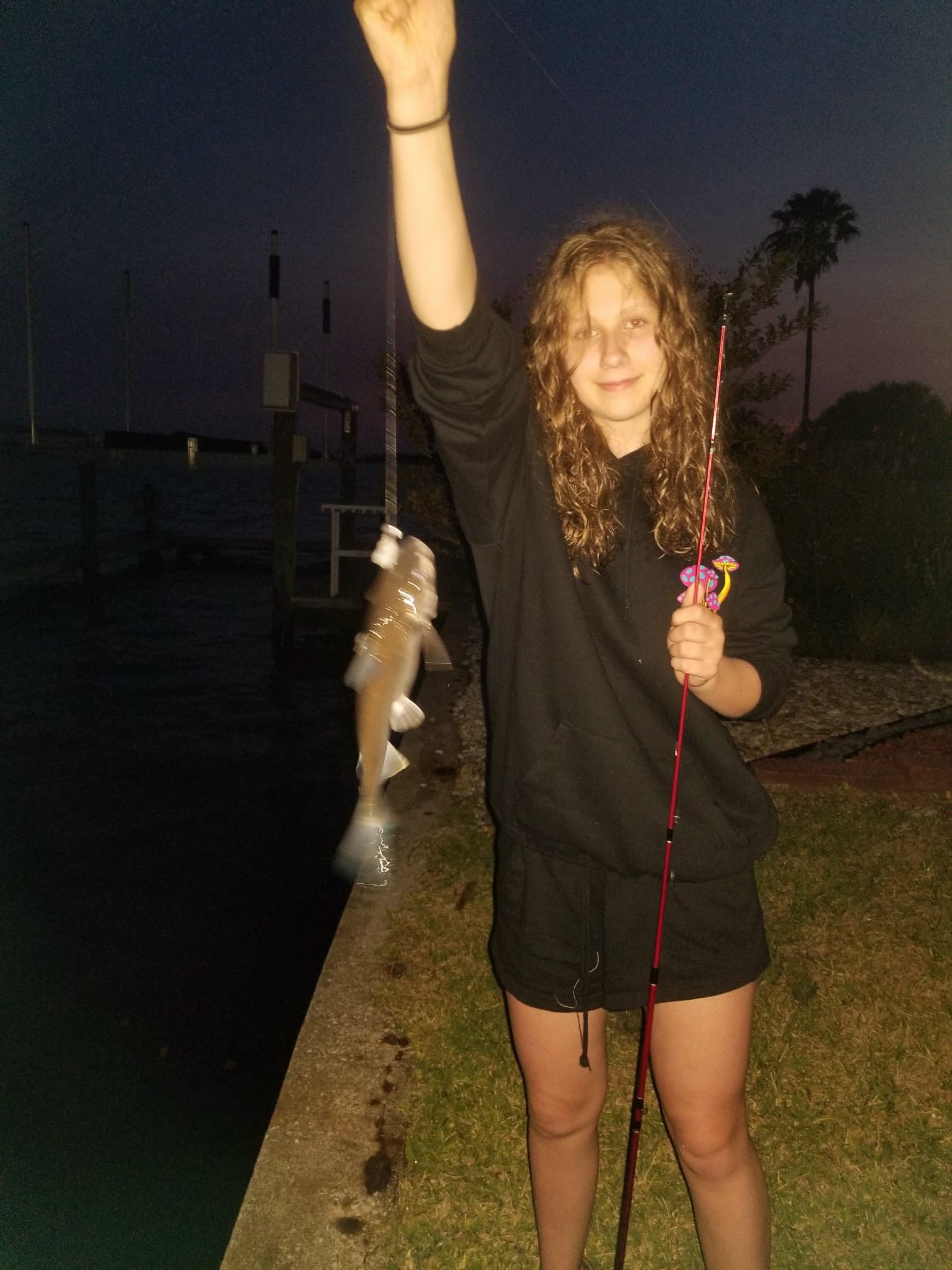
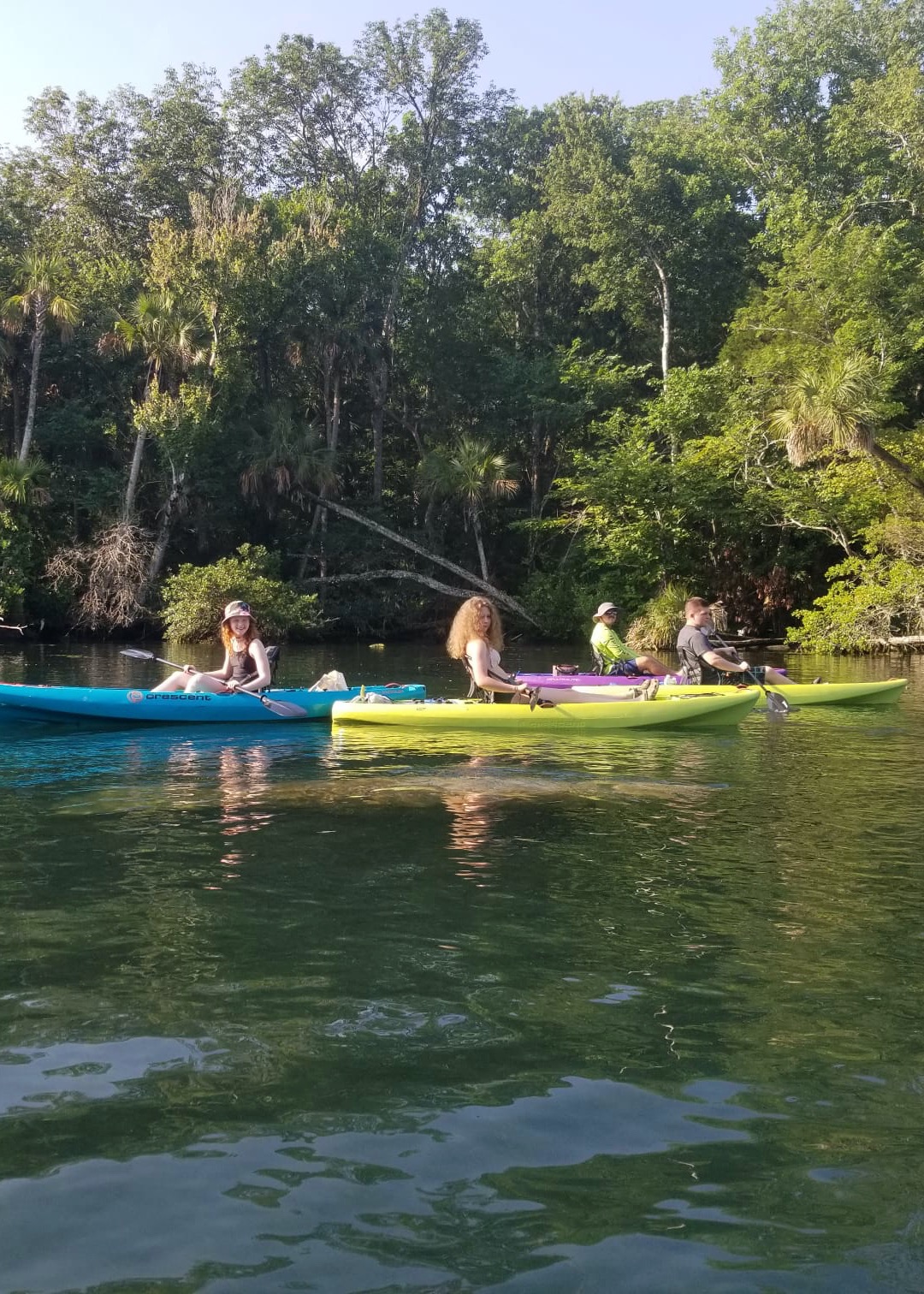
Waldorf students perform a class play each year, first through eighth grade, so by the time they reach the 8th grade they’ve been performing together for years. The class of 2022 channeled their vibrant energy into performing Shakespeare’s As You Like It, and what a performance it was! There were circus tricks, dancing, 3 characters in 1, laughter, and lots and lots of applause.
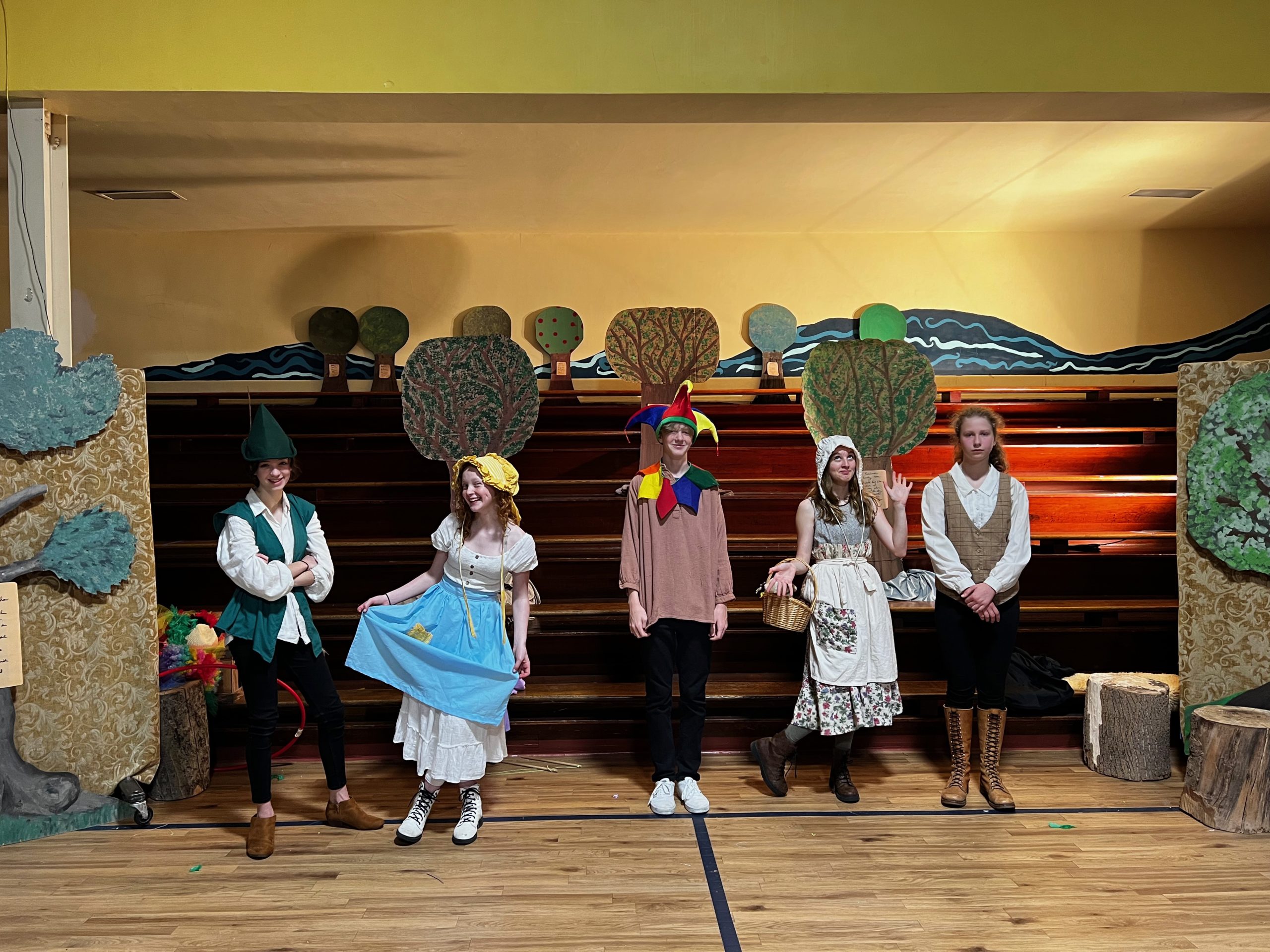
The entire school gathered on the last day of school for an End of Year Ceremony. First graders performed a very special song for the 8th grade and presented their 8th grade buddies with a yellow rose. The 1st graders received a rose from an 8th grader welcoming them to SWS when they began their school year, and they were paired with an 8th grade buddy for the entire year. A very special bond develops between our 1st and 8th grade students and this year was no exception.
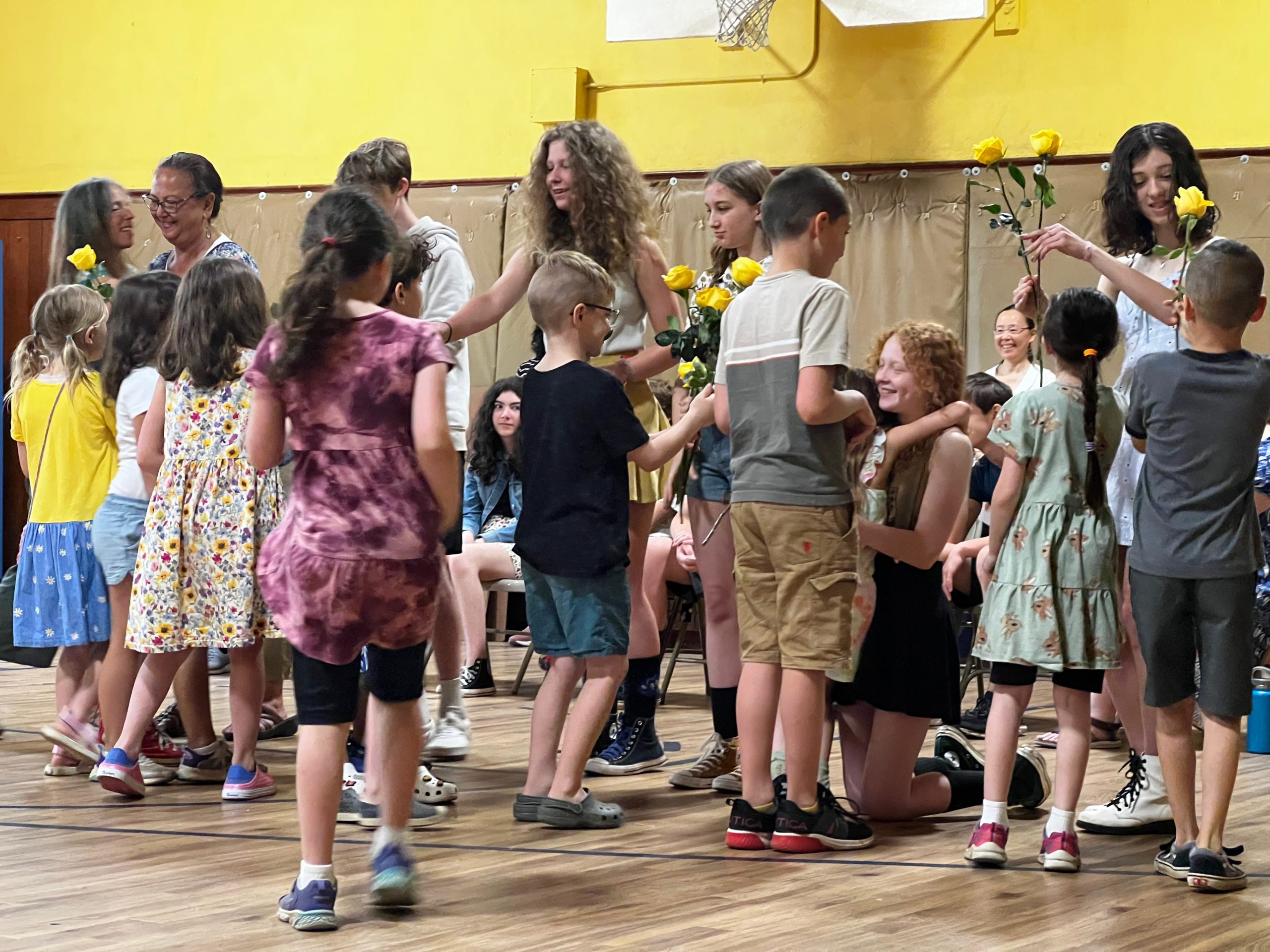
Faculty, Staff, parents, and loved ones gathered together on Sunday, June 8th to celebrate and honor the Class of 2022 at their graduation. It was a beautiful, sunny day at a picturesque location along the Susquehanna River. The graduation ceremony was a perfect representation of this incredibly gifted group of students. They serenaded the crowd with Build Me Up Buttercup by The Foundations, Never Gonna Give You Up by Rick Astley, and their original, The Manatee Song. They spoke thoughtful tributes to all who made their education journey so special. Mrs. Radanovic spoke of her admiration for the class, Ms. McGrew shared a rhyme about each student and Ms. Satterlee presented each student with heartfelt words and diplomas. The 7th grade orchestra played as the ceremony came to a close and we wished the 8th graders well. It was a creative, funny, and deeply touching ceremony. Thank you to all who made it so special, especially Ms. Satterlee, Mr. Cameron, and 8th grade class parents!
Congratulations Class of 2022 and blessings on your journeys ahead!
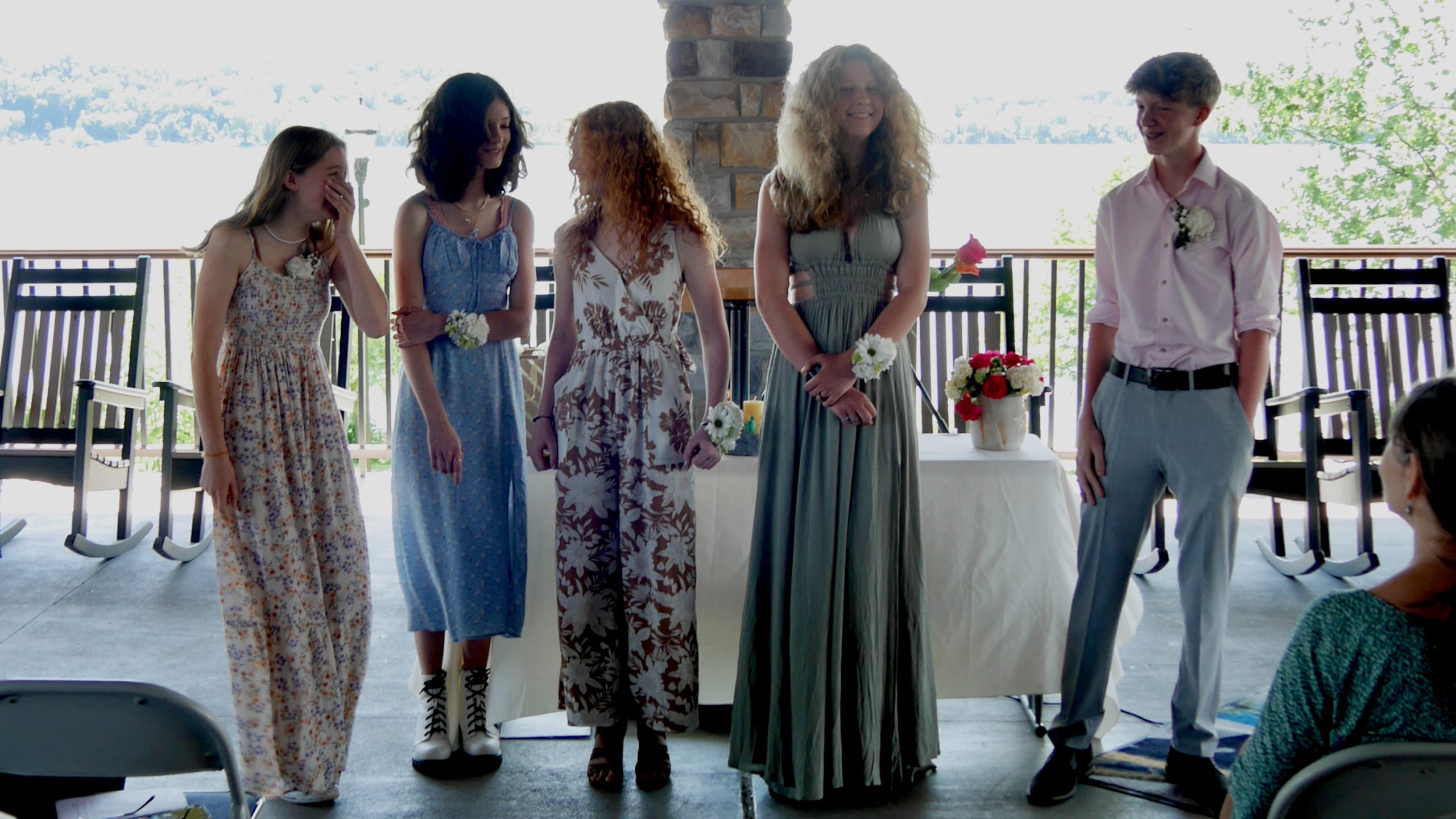
35th Anniversary Spotlight: Alum Parent Jon Darby
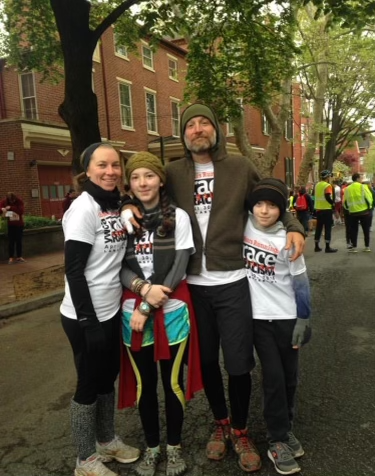 We are celebrating 35 years of Susquehanna Waldorf School this year! In honor of our 35th anniversary, we’re interviewing members of our community to share why they love SWS. Alum Parent, Jon Darby, sat down to talk with us about his time as a parent at SWS.
We are celebrating 35 years of Susquehanna Waldorf School this year! In honor of our 35th anniversary, we’re interviewing members of our community to share why they love SWS. Alum Parent, Jon Darby, sat down to talk with us about his time as a parent at SWS.
On Time at SWS…
So we have two children, Elliott and Abram, both of them have been at SWS in various capacities at different times. Abram graduated from 8th grade in 2019. He’s a junior in high school now.
We were introduced to the school early on when we moved from Maryland back to Pennsylvania. We were looking for schooling options for our kids that weren’t the standard. We came to Susquehanna Waldorf and fell in love immediately. Our first encounter at SWS was parking in the parking lot, getting out of our cars, and literally hearing children singing coming out of the windows. It almost didn’t feel real. My school experience was very different from that. And I was like, “Wow, is this a real thing?” So that was really magical. We walked in here and between the imagery, the colors, the people, the singing, there was really no going back from there.
When our kids started here, my daughter was in kindergarten and my son joined Miss Jackie’s parent/child class. Because my wife was teaching, I was the one who took him to parent/child every week so I felt like I was getting an education in the process. I mean, I don’t think I was, I definitely was. It changed the kind of father I was and it changed my whole parenting style.
We stayed through early childhood and, largely because of finances, we decided to homeschool for a few years. Around the time my son was heading into 5th grade, he was missing that social side of school. He was at SWS in kindergarten and early childhood, so he had these friends he stayed in touch with. So he seamlessly floated back into 5th grade at SWS, already knowing half of the class that he was joining. It was almost like he had never left and it was really an amazing experience. So he was there 5th through 8th and graduated in 8th grade with Ms. McIntyre.
Why Waldorf?
Initially, it was really the heavy emphasis that we saw being placed on music, art, and nature. And the natural rhythms and really focusing on the way children actually develop. I found out that Waldorf was looking at how brain development happens in children. How children will naturally start to read at ages 5-9 and that’s normal. Whereas in a public school, if your child isn’t reading really well by 1st grade, then they’re sectioned off into the slow kid track. It’s not honoring the children.
Seeing that Waldorf was really putting the emphasis on the natural rhythms of the child, the natural rhythms of the year seasonally, the heavy concentration on nature, there’s art everywhere, obviously, getting out of the car and hearing music, it really felt like a much more holistic system than my personal schooling experience in the public school system.
I saw Waldorf as a structure designed to reconnect, and build relationships with the seasons and the land. It’s the complete antithesis and antidote to what the dominant culture is offering.
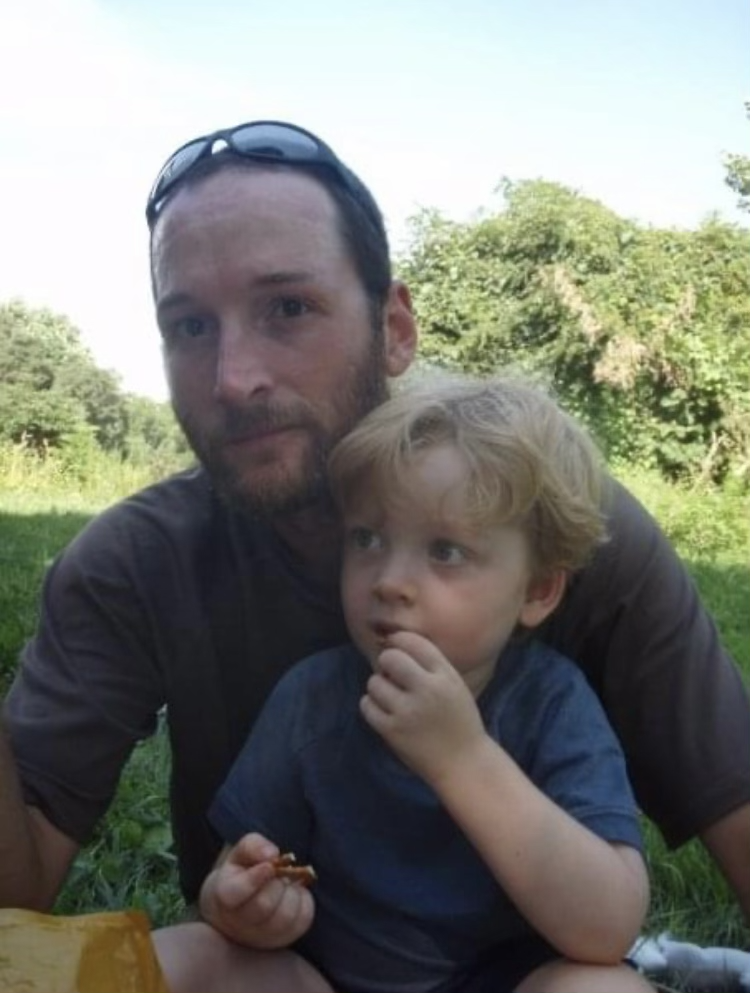
Experience as a Parent at SWS
Miss Jackie was our parent/child teacher and one of my main first introductions to Waldorf. She totally changed the way I parent. I was pretty young. I had good intentions but had never really spent time with small children. So, like everybody, I was modeling and mimicking my own childhood and how I was parented, and despite having wonderful parents, it was very discipline based and that was all I knew. That’s what I was expecting I’d do as a parent and so I was able to see this completely different paradigm in Miss Jackie’s classroom. It’s hard for me to really put it into words, but we were honoring the child but also redirecting the child. Like, when a child is doing something they shouldn’t be doing, rather than yelling “No, don’t do that,” it’s, "Let’s redirect you over here." The more I began to understand how their little brains work, it made so much more sense.
Not only were the children there but the parents were there and I got to speak to other parents and talk about challenges and what’s working. And it was me, the dad in the room, with 5 other moms and that was a cool dynamic. I was in charge of removing spiders from the room if they showed up. I got to see the emphasis on the handwork and the story time and how the children really reacted to these simple stories with little puppets. It really was an enchanting and magical way to see a child progress.
The one thing that has always struck me. It struck me when my children were young with Miss Linda. It equally struck me with Ms. McIntyre when we went to the parent/teacher conferences, is to have a teacher talk about your child (I get choked up just talking about it) talk about your child and who they are and have it be so accurate. “How does this woman know my child as well as I do?” It was always really stunning to me. Her ability to read the children and understand who they are and what they need and to really see them. Trying to meet them where they were and push them further. For me, that’s been, more than anything else, that’s the thing that’s always hit me the hardest that I can’t talk about without getting choked up. That kind of connection to your children, and I don’t know if that’d be possible without the teacher following them through the schooling years, but at the same time Abram came back in 5th grade and within that same year she was so in tune with our child and it was really amazing.
I remember when we met with Miss Linda and Abram was in her class for the first time and, I don’t remember exactly how she worded it but, she said she was first and foremost an advocate for our child. And she said it in a way that was almost like, let’s talk but just be clear, I’m not here for you. He comes first. And I’m going to hold that ahead of what you want. That was really amazing too. To really feel that.
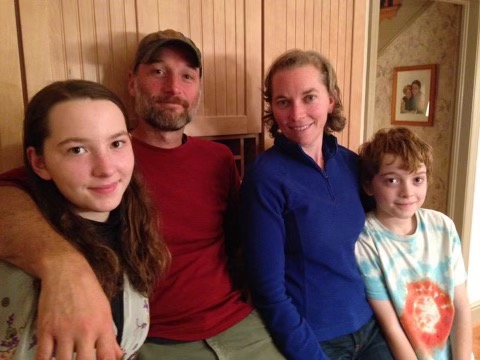
Impacts of Waldorf Education on Children
With Abram, I feel like he came out of Waldorf as a super confident kid and really knowing who he is. Like I’ve never been worried about him with peer pressure and getting into stuff with kids he shouldn’t be because he came out of Waldorf with such a strong sense of self that’s not really shiftable for him, at least not from a peer group. He’s super smart and super deep thinking and I really feel like that has a lot to do with the way that Waldorf educates kids.
It’s funny because he kind of grumbles about Waldorf a bit. “I didn’t get this or that” and I hear other teenagers feel the same way but I also feel like he knows better than that. I feel like he would absolutely not be who he is if he went through the public school system. He has a strong sense of the world and he cares about stuff. He’s a super smart kid and has done extremely well at Lancaster Mennonite.
The other thing that I think is amazing watching him with his peers is that he’s still connected with all the kids he graduated with from SWS. They all just planned a trip to Philly. They all took the train down and spent the day in Philadelphia. I hardly know anyone I went to high school with. I never made friend connections like that. To see him keeping in touch with those people, how he considers them family, that speaks volumes to me about how the classes are organized and run. I think having the teacher hold the children in reverence, treating each one like an individual, and essentially modeling that behavior, helps them do that for each other. There is no pecking order that gets handed down from above that can happen in other situations.
I have no doubt he’ll come around in his early 20s and be like "Wow, Waldorf made me who I am and it was amazing."
What Makes SWS Special?
First and foremost, the actual human beings that are there doing the work. So many people that we hold in such high regard we know through this school. Not only our friend circles but the teachers, Ms McIntyre, Miss Jackie, Miss Linda, the staff. So many people we’ve encountered and have been along on this journey with us are amazing people. So it’s an amazing community. Probably secondly, is the proximity to the Susquehanna River. Having the kids be able to walk down to the river and really get to know the river. That river to me is super important. Having that as a backdrop to the school is a pretty powerful source of energy and inspiration and love.
May Day + 35th Anniversary Celebrations!
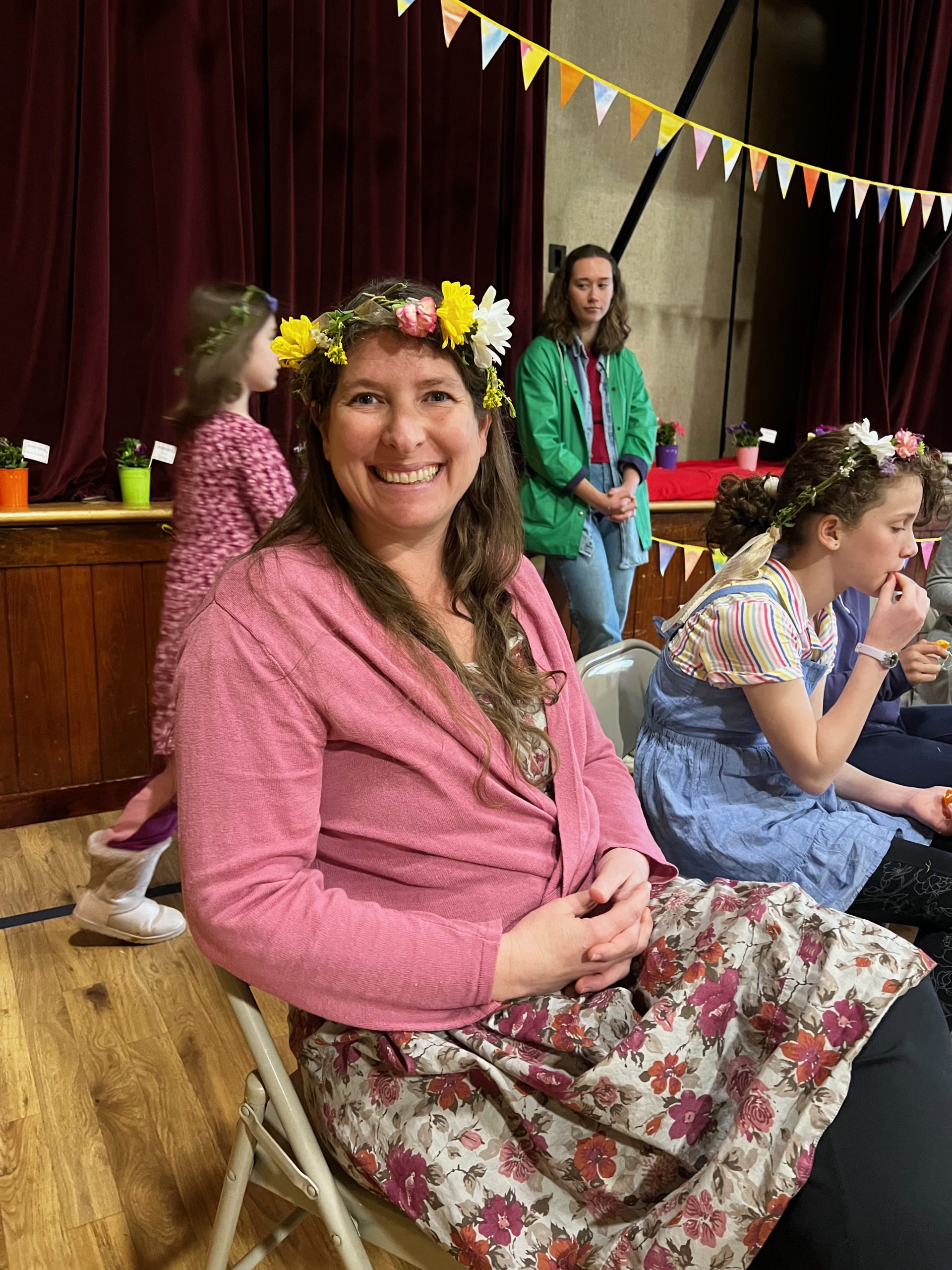
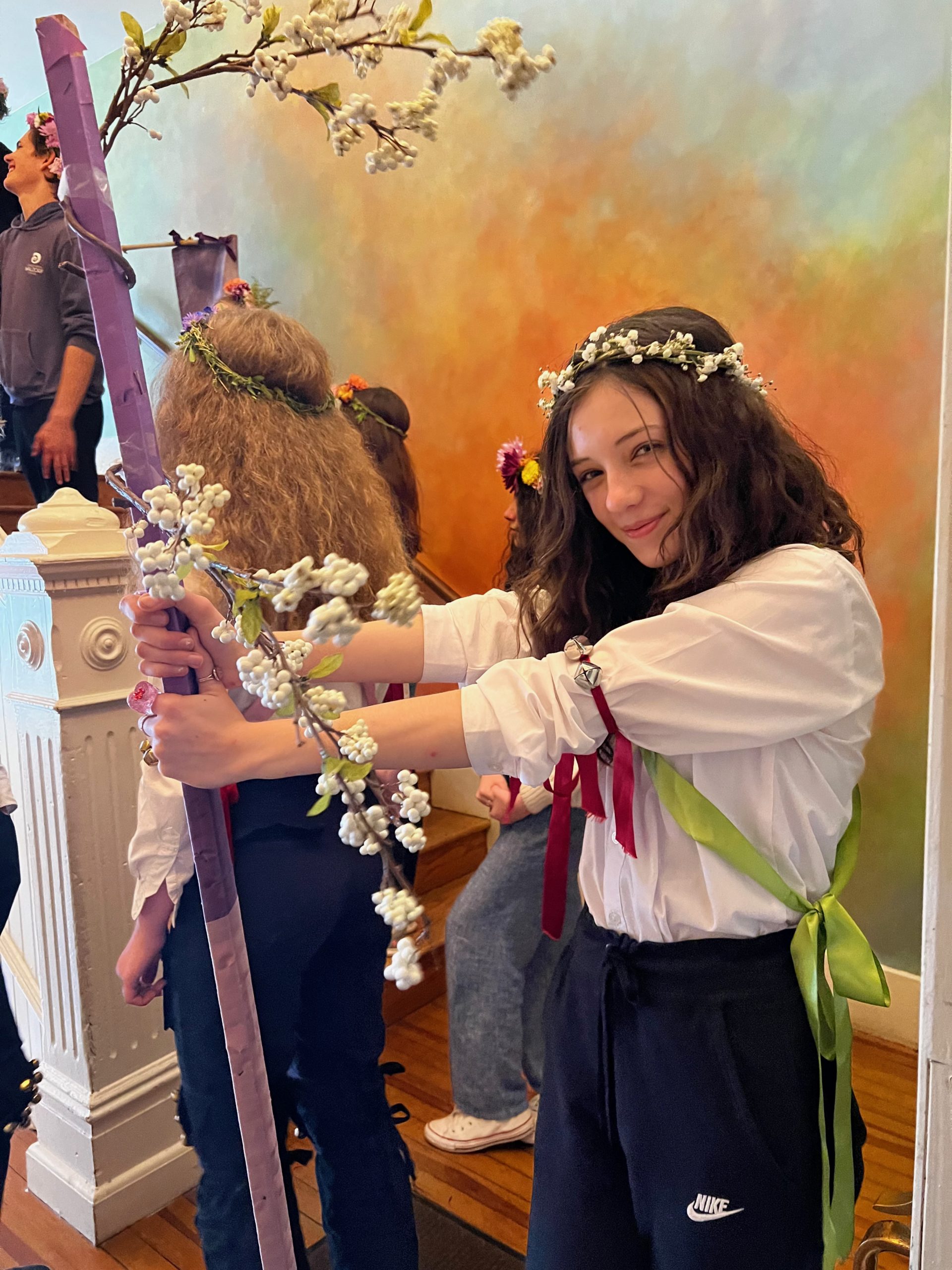
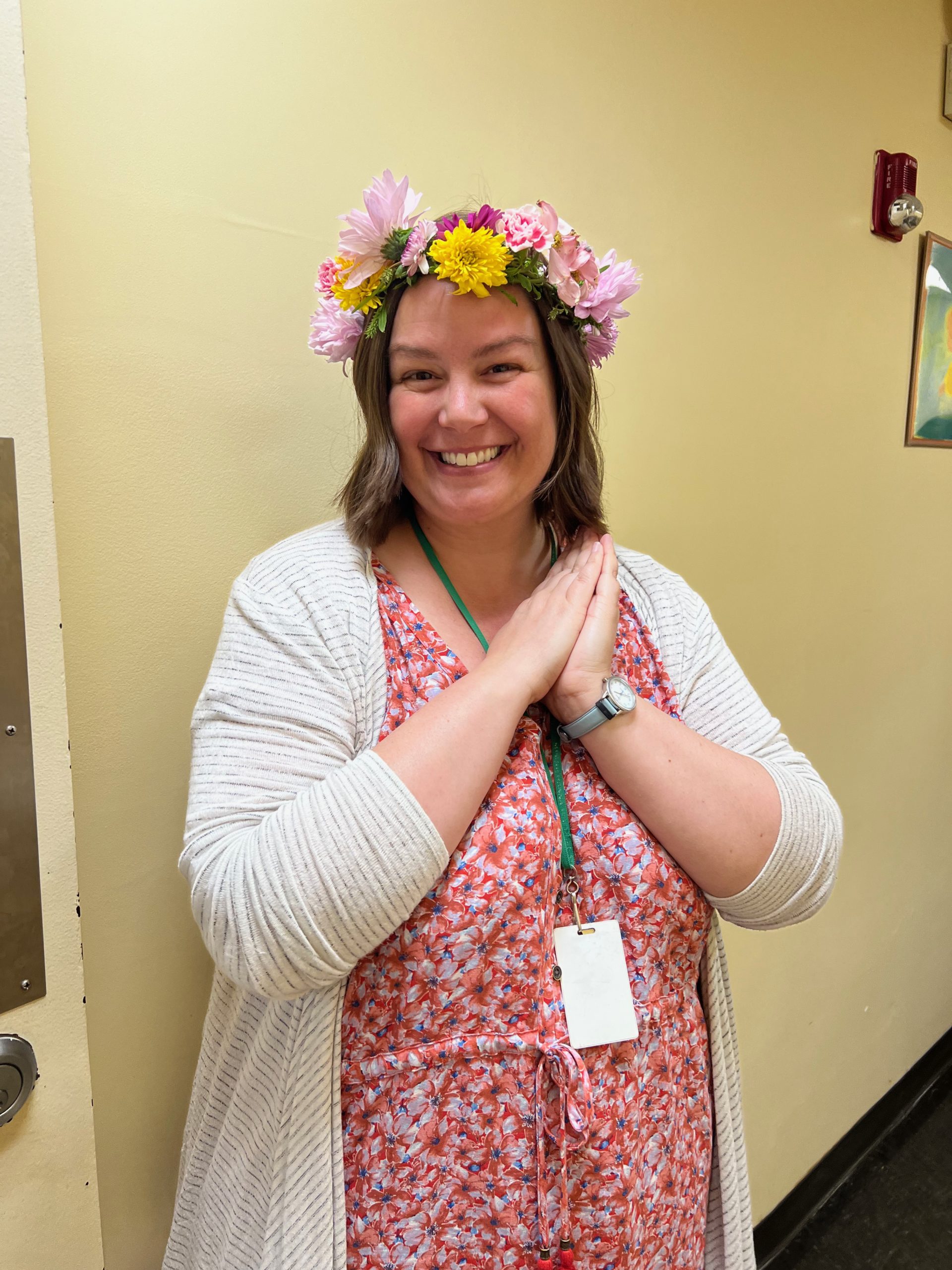
We had an eventful and joyous day on Friday, May 6th as we celebrated our annual May Day festival and our 35th anniversary! We hoped for a bright and sunny day for our students to dance around the Maypole and for our whole community to come together to celebrate. Mother Nature had other plans, though. It may have been raining outside but our gymnasium was filled with wonder and delight.
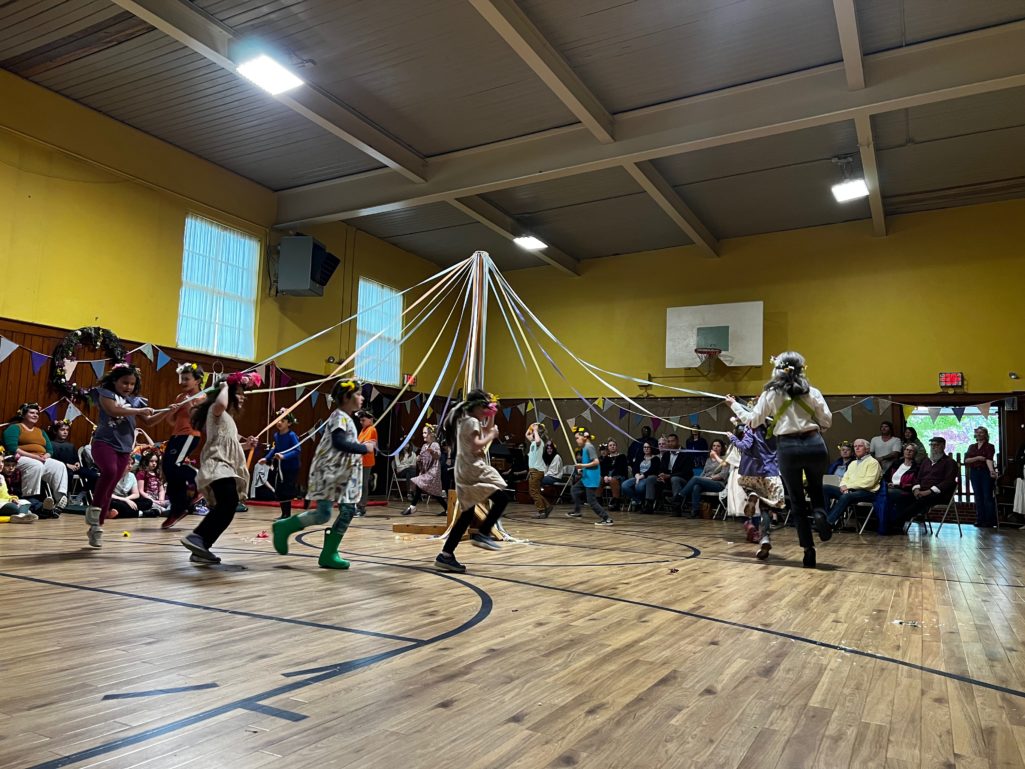
Honoring the rhythms and cycles of nature are a core part of Waldorf education. May Day, which lands about halfway between the Spring Equinox and the Summer Solstice, is a festival our students look forward to all year. They spend weeks learning their May Day songs and dances with our Music and Chorus teacher, Nina Radanovic. Kindergarteners begin the day by delivering small bouquets of fresh flowers to our school neighbors. Parents arrive in the morning to decorate the school and bring flowers to the classes. The students spend the morning creating their May Crowns which they proudly wear all day.
The student procession begins with the 8th grade students walking to collect the first graders, then second graders, and so on. The student procession enters the gym, where their families and loved ones are waiting, and the festivities begin! This year, our 6th graders opened the festival with the North Skeleton Sword Dance and 8th graders followed with the Upton-upon-Severn stick dance as 7th graders played music, led by Orchestra teacher, Michael Cameron.
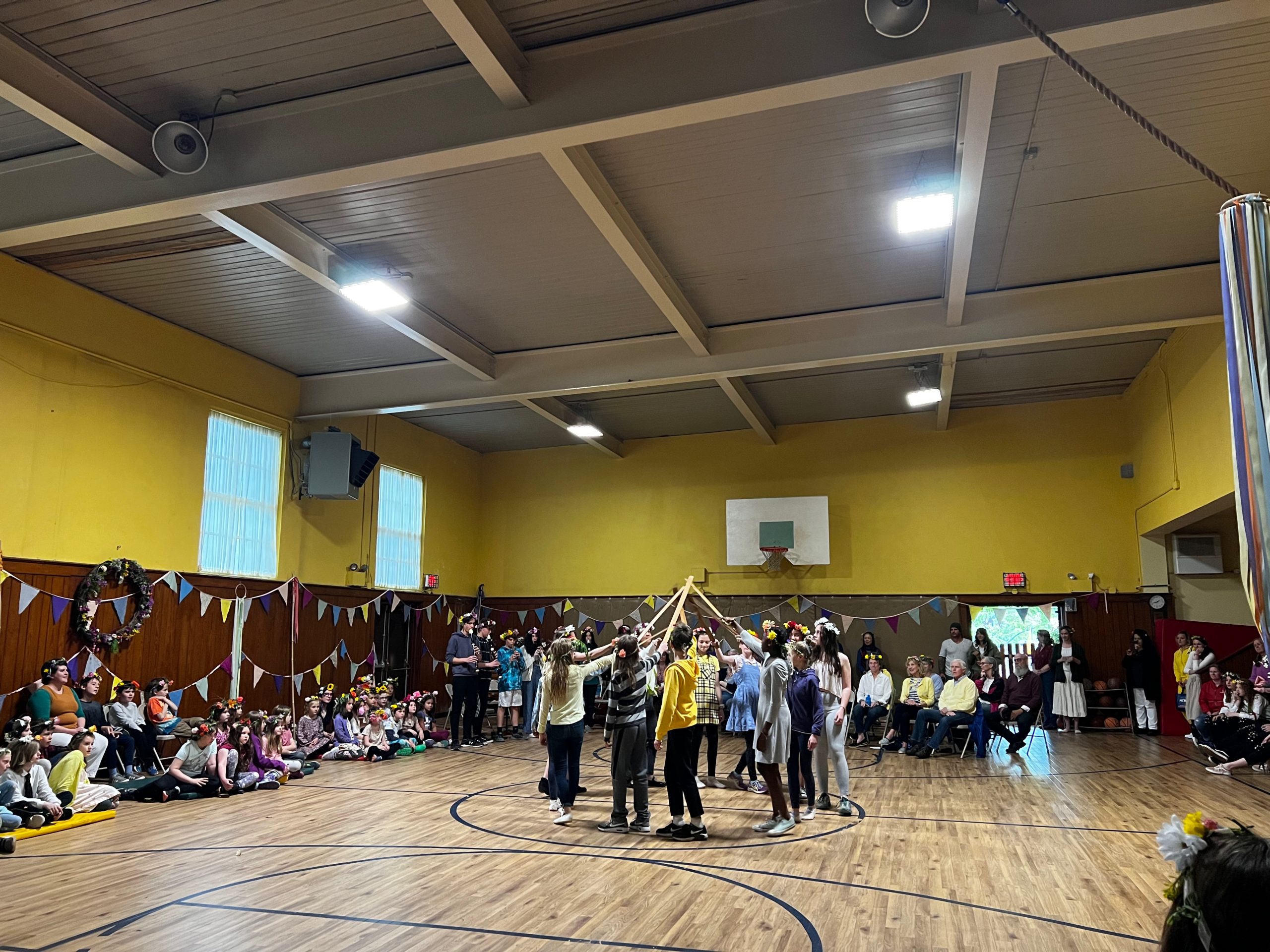
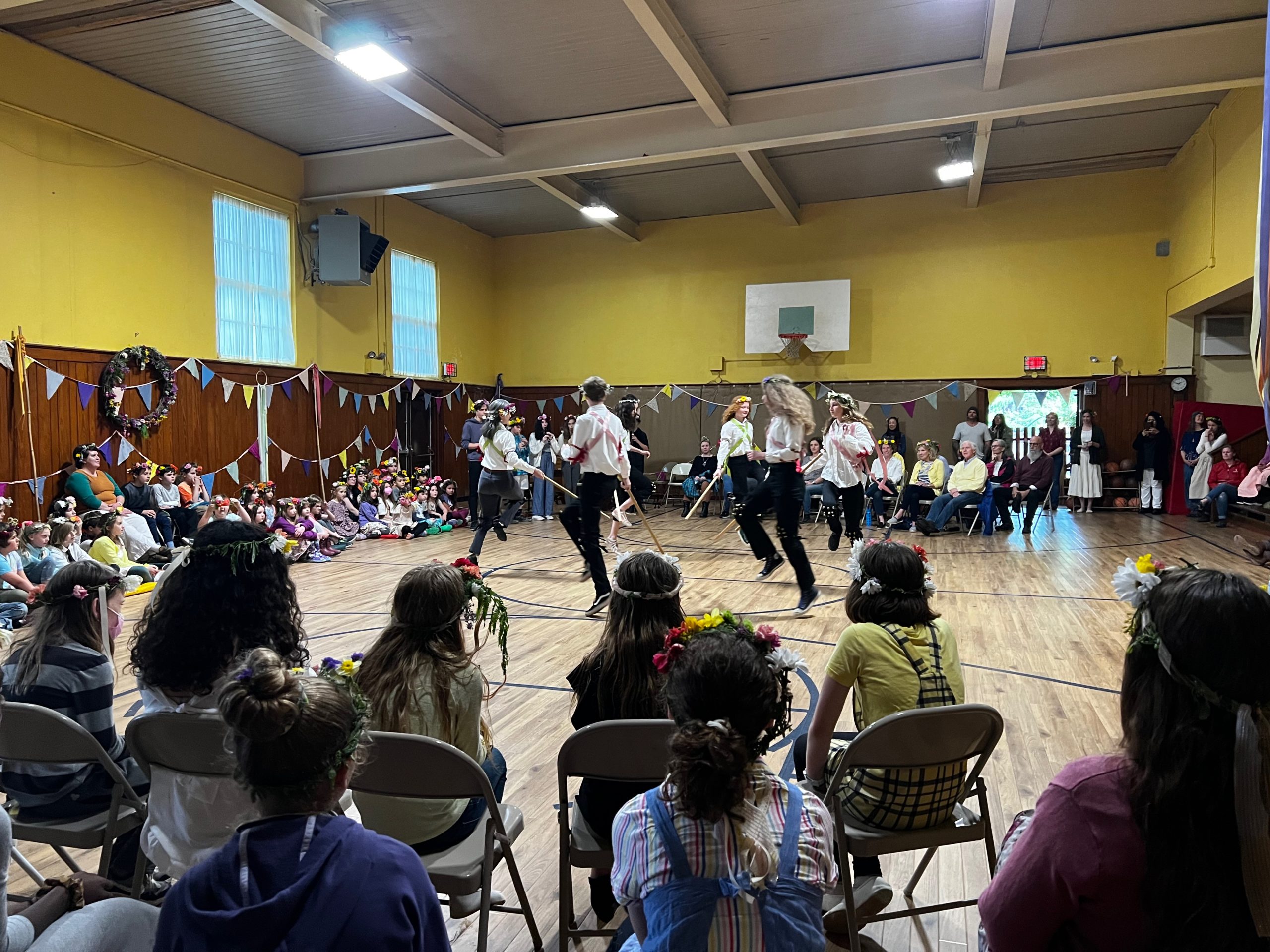
The Maypole songs and dances followed! Our grades students each collected a ribbon as they danced and sang around the Maypole. There was delight, beauty, and laughter in the air. After the completion of each dance, 8th graders joyfully passed out clementines to the students who performed. One could hear the "oohs and ahs" as the Maypole dancers created patterns with the Maypole ribbons. Parents and other community members even joined in at the end!
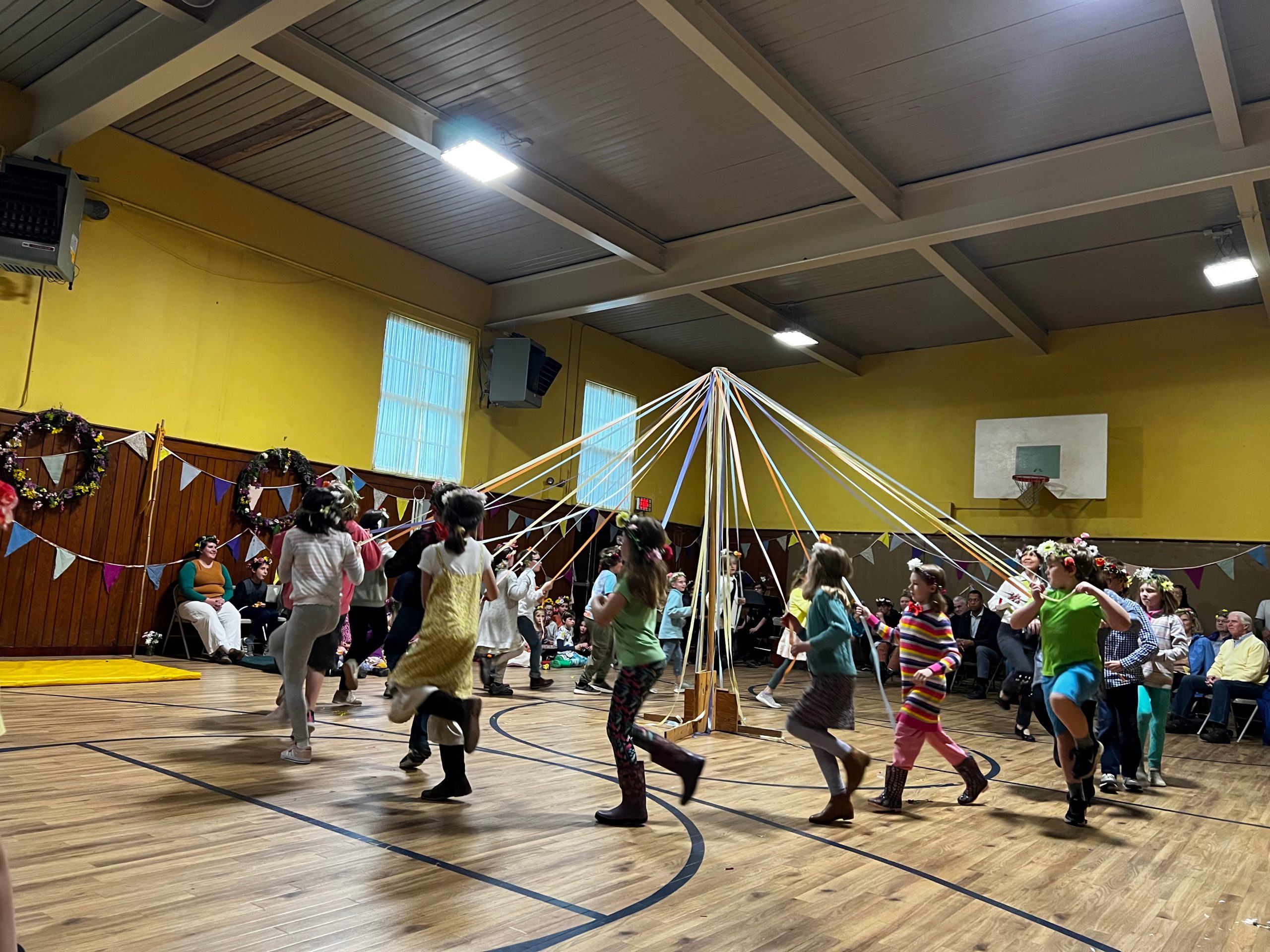
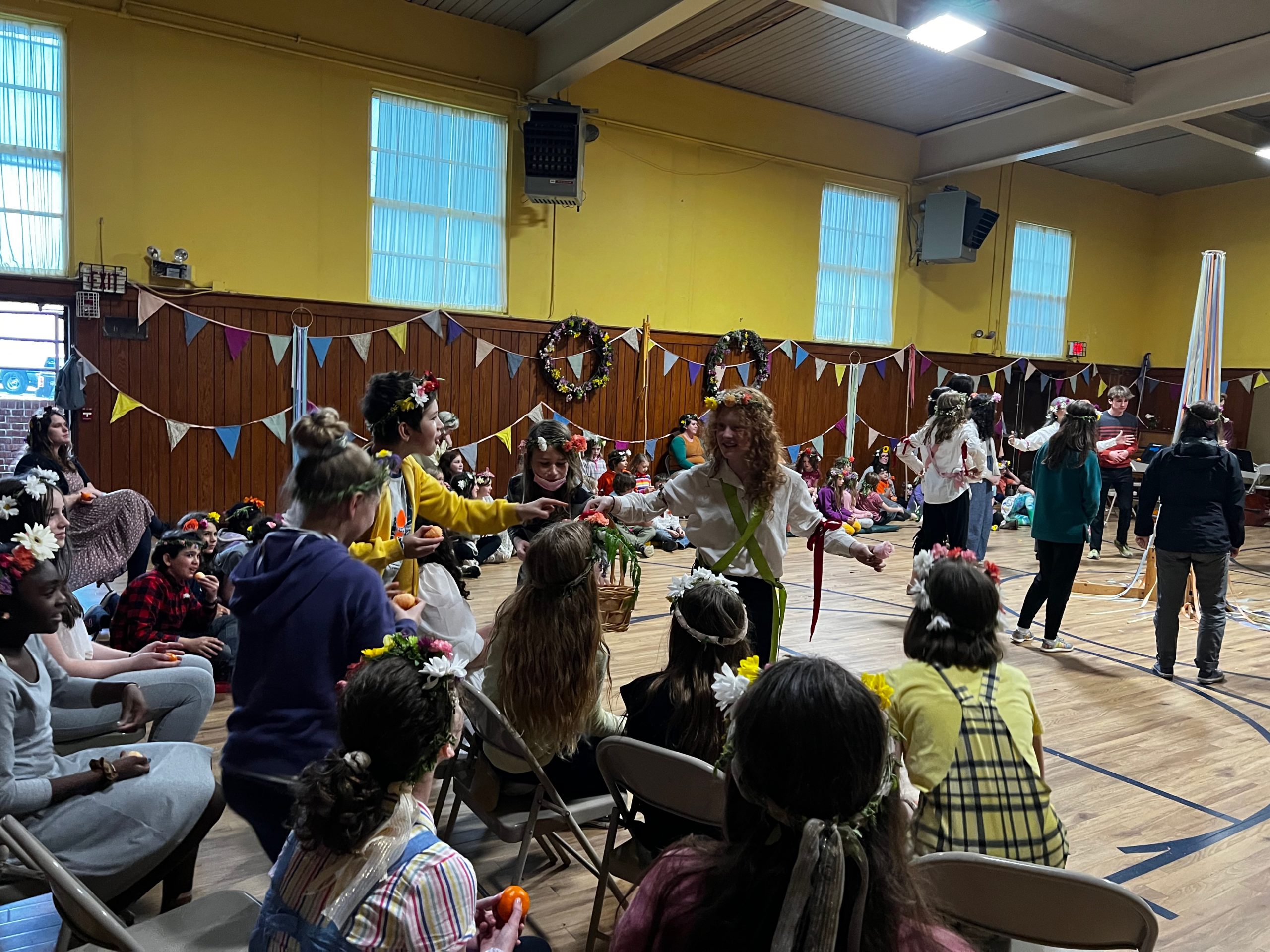
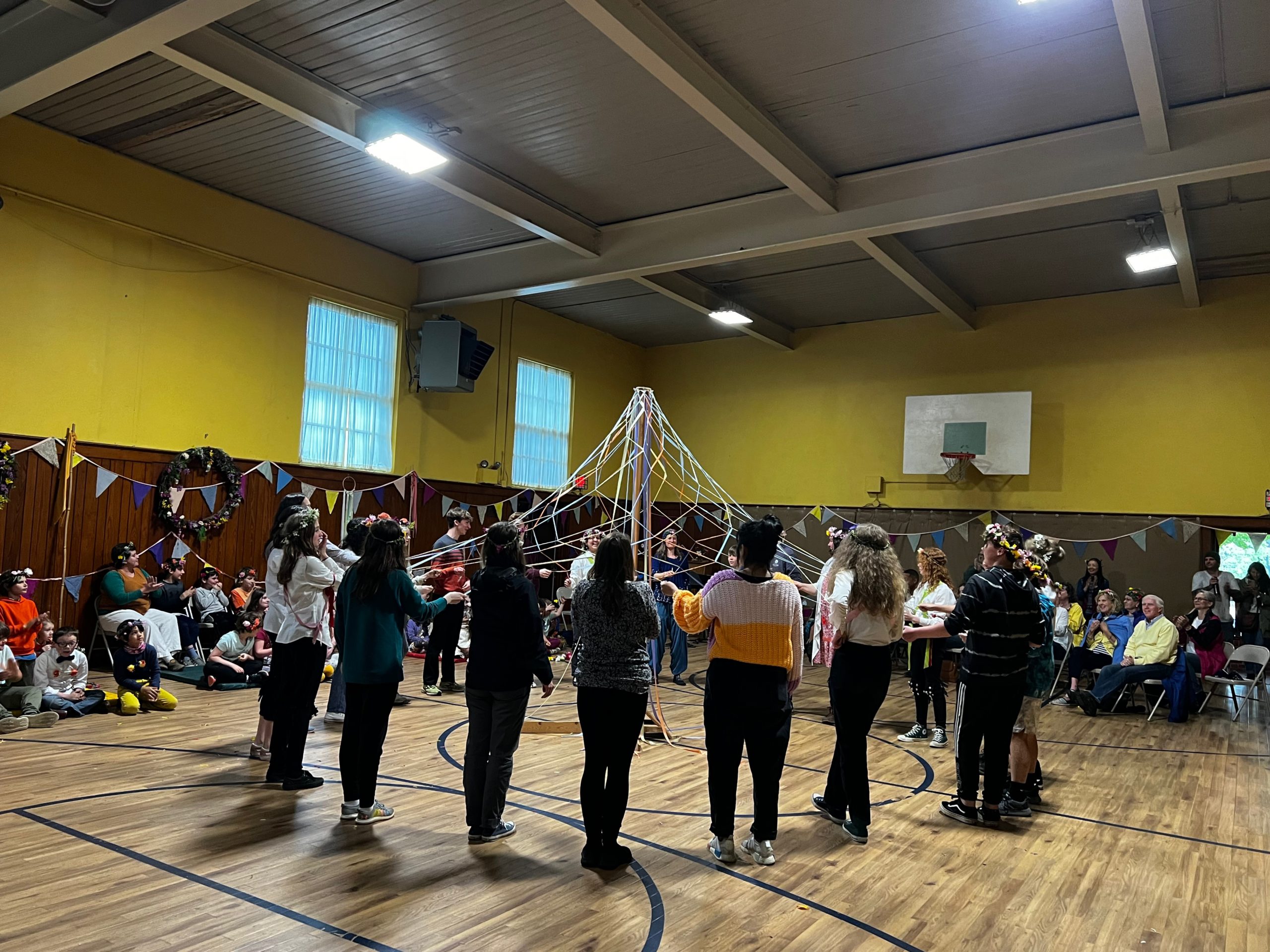
May Day came to an end and the 35th anniversary festivities began! We were so thrilled to come together as a community to celebrate 35 years of Susquehanna Waldorf School. SWS's first teacher, Miss Linda, joined us to talk about the early days of SWS and what she finds so special about our school by the river. We had SWS trivia (congratulations to Magistra Sweeney, Tseng Lao Shi, and Ms Tucker for their perfect score!), a cake walk, an alum vs students tug of war (students won!), and more. It was so good to socialize and share food and games together! We are so blessed to have such a caring and vibrant community.
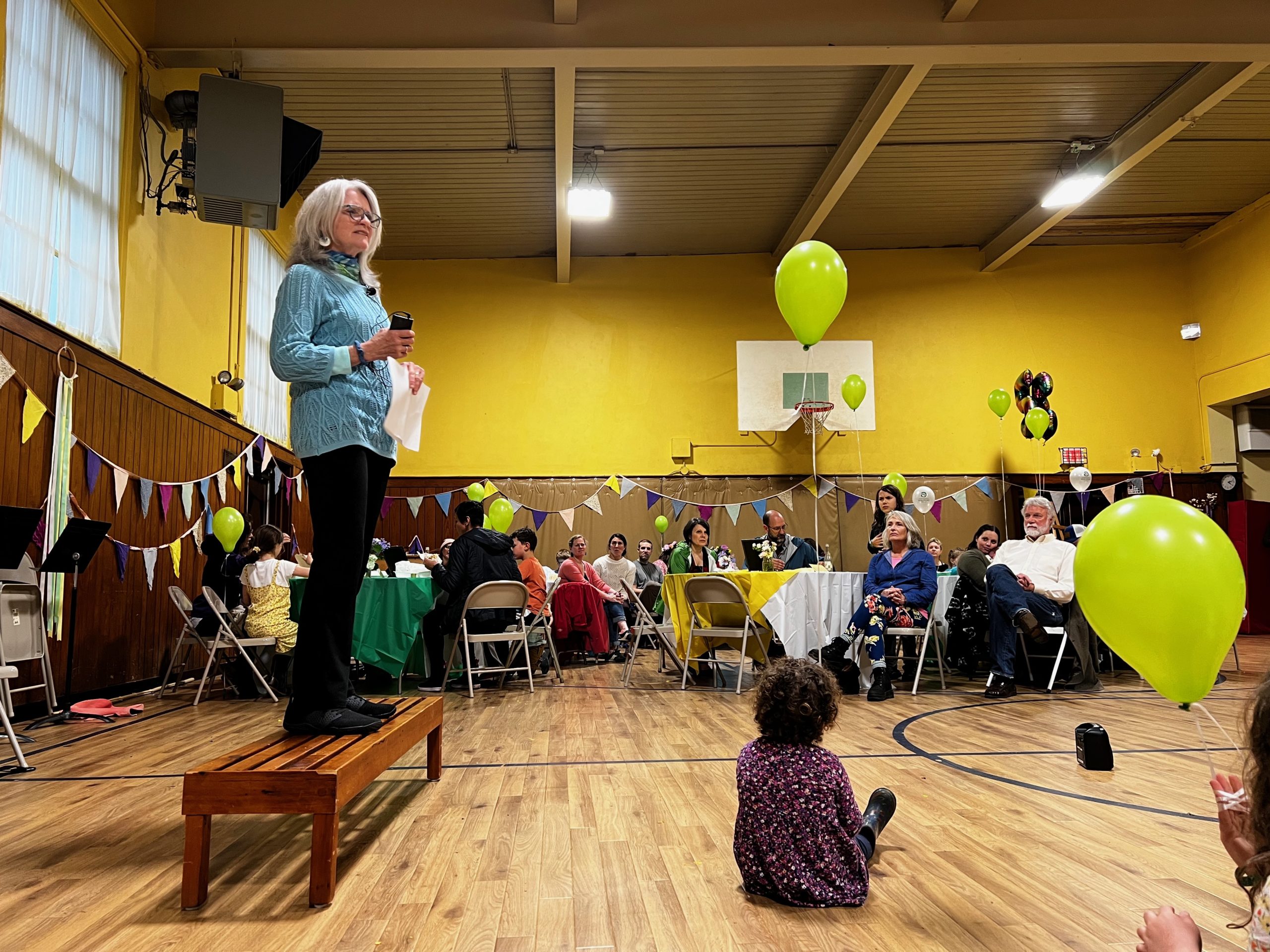
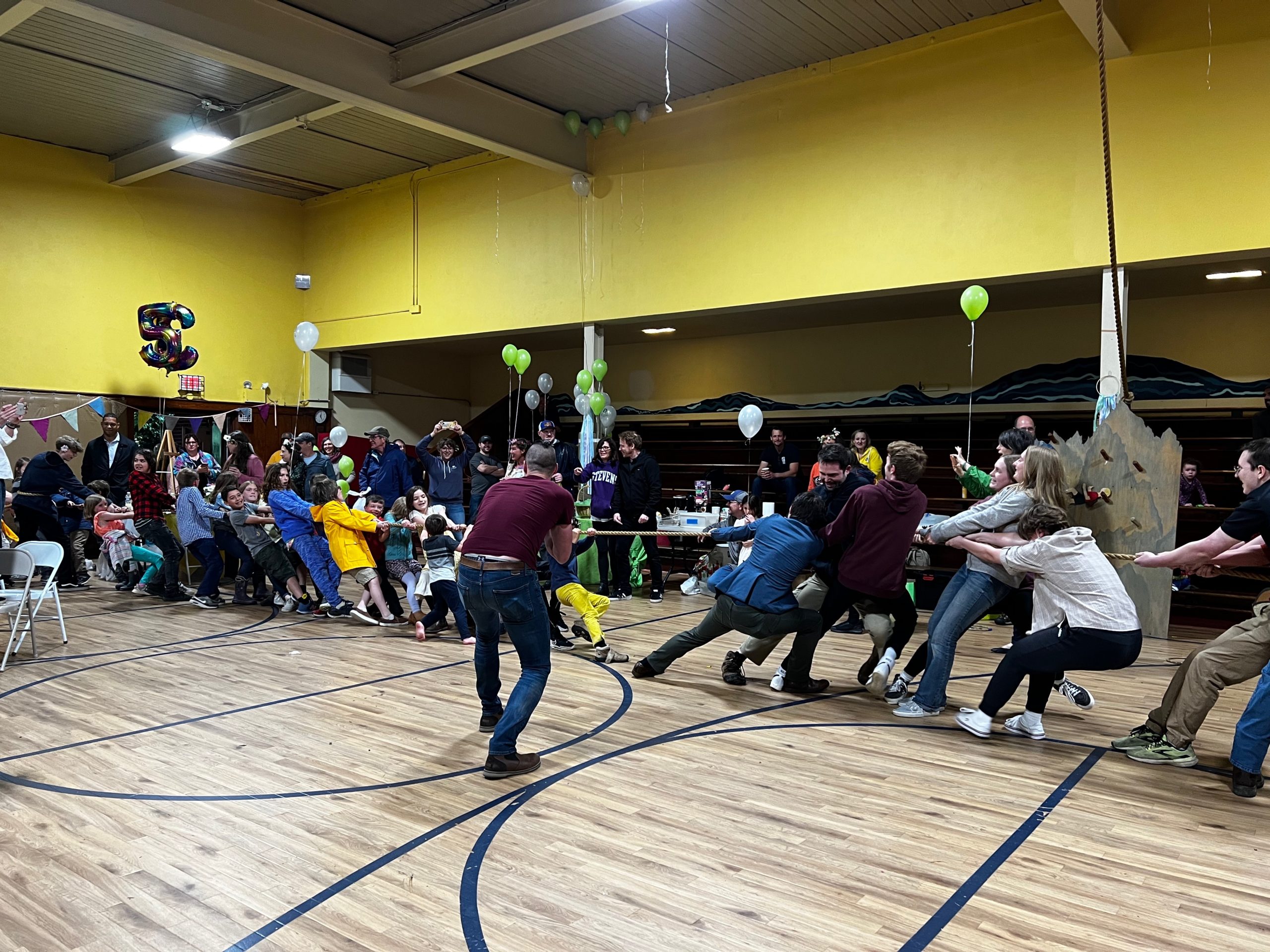
Middle School Mandarin Lessons with Tseng Lao Shi
Written by Mandarin Teacher, Hui-Ling Singer.
As the 2021-2022 school year comes to an end, here are some of the highlights that were captured during Mandarin classes in the Middle school in the month of May.

Miss Katie, one of our Buttercup kindergarten class assistants, came to 6th grade Mandarin class recently as my special guest to share with the children her experience of teaching English in China and Taiwan. She told the children how important it is to learn a foreign language at a very young age and how much fun it was for her to teach English while traveling around Taiwan.
She brought a lot of fun memories from Taiwan to share with the children including a very creative scrapbook and a Taiwan travel guidebook. Listening to her talk about Taiwan brought back a lot of fun memories for me as well. I’m so glad to know that she likes Taiwan so much and would like to go back someday.
Miss Katie is going to Washington State to attend a Waldorf teacher training program and eventually would like to become a certified Waldorf teacher. I told her that maybe after she finishes her Waldorf teacher training and receives her teaching certificate, she can go back to Taiwan and teach in one of the Waldorf schools there. I know that her gifts and talents will be well received in Taiwan. Many joyful blessings to her future endeavors!

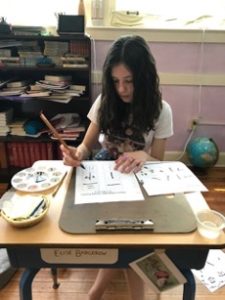
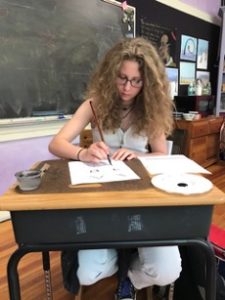
Chinese names have meanings. I’m often asked by my students, “Tseng Lao Shi, what’s my Chinese name?” I always answer, “I don’t know.” They then look at me and say, “Really, you don’t know?” And of course, I would answer “Really, I don’t know.” The reason that I don’t know is because I am hesitant to only use the pronunciations of their English names and match them with the Chinese characters that sound just like their English names. By doing so, there is no meaning at all. My intention is to give them real Chinese names when they are in 8th grade. Their Chinese names will then reflect their personality and strength.

Chinese first names usually consist of two Chinese characters. In Chinese culture, sisters will often share the first character, and the same goes with brothers. Most of our 8th graders have been together for many years, so they are just like siblings. The first character these four sisters share is 怡Yi meaning happy. Here are their names in Chinese with the pronunciation next to each character and followed by the English meaning in the parenthesis from left to right in the above photo: 怡Yi (happy) 柔Rou (soft, gentle), 怡Yi (happy) 敏Min (quick, nimble), 怡Yi (happy) 靜Jing (still, quiet), 怡Yi (happy) 雅Ya (elegant, refined). 8th grade had the opportunity recently to learn how to write their Chinese names in Chinese calligraphy using the traditional Chinese paint bushes.



7th grade loves Chinese dumplings. They had the opportunity to make more in class a week or so ago. I don’t remember my mom following any particular recipes for making dumplings, so I usually just try to remember what they tasted like and experiment along the way. Fortunately, there is more than one Asian market in Lancaster for me to go and get some of the ingredients we needed. I have to say these dumplings turned out quite delicious.
SWS Races Against Racism
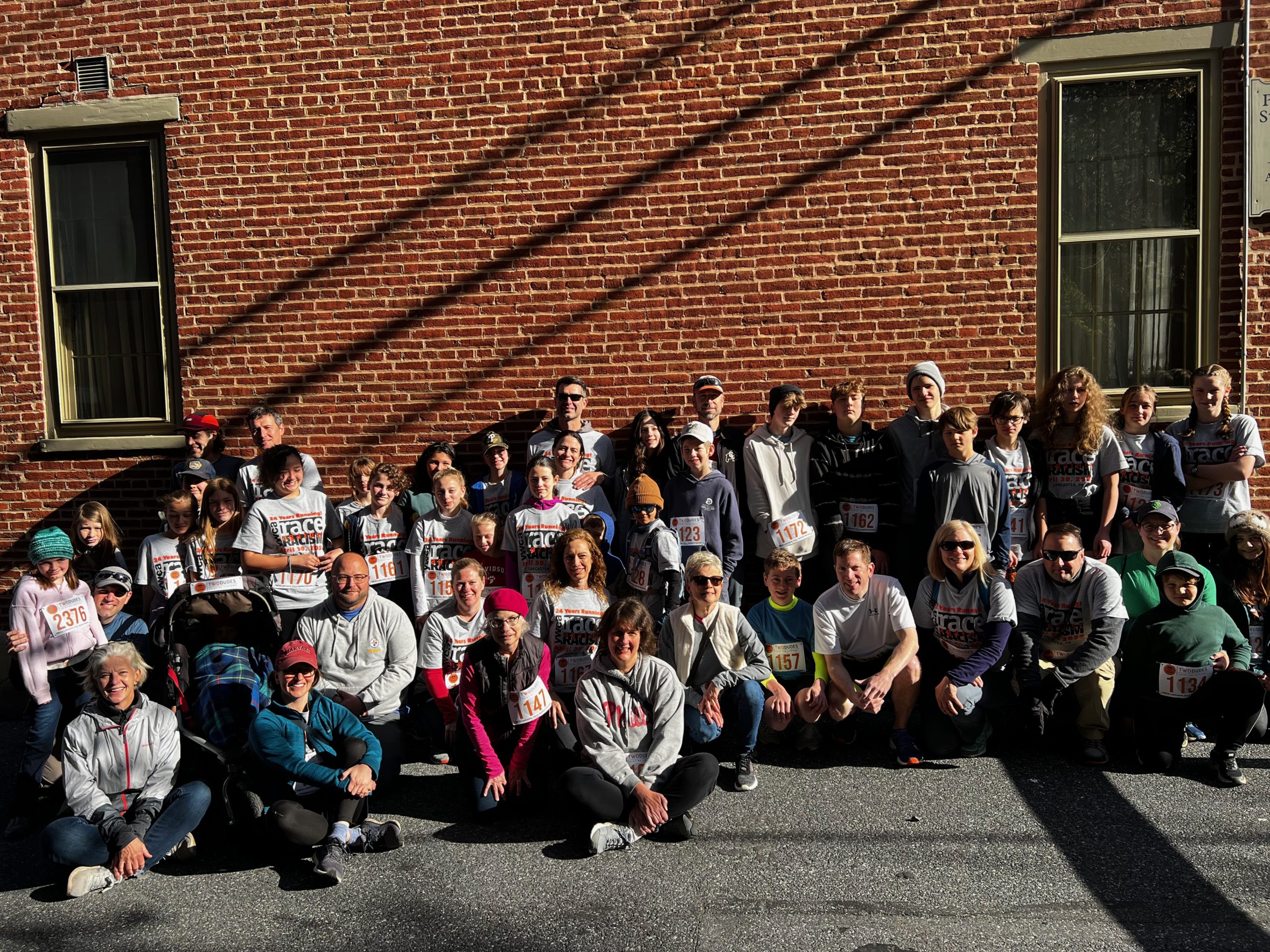
Susquehanna Waldorf School joined together and raced against racism this year. Our middle school students gathered every Monday and Wednesday after school to participate in our spring running club to prepare for the annual Lancaster YWCA 5k race. Coaches McIntyre, Sweeney, and Satterlee led the students in running games, breathing exercises, and training for long runs. We're grateful to be just a stone's throw away from the trail that runs alongside the Susquehanna River!
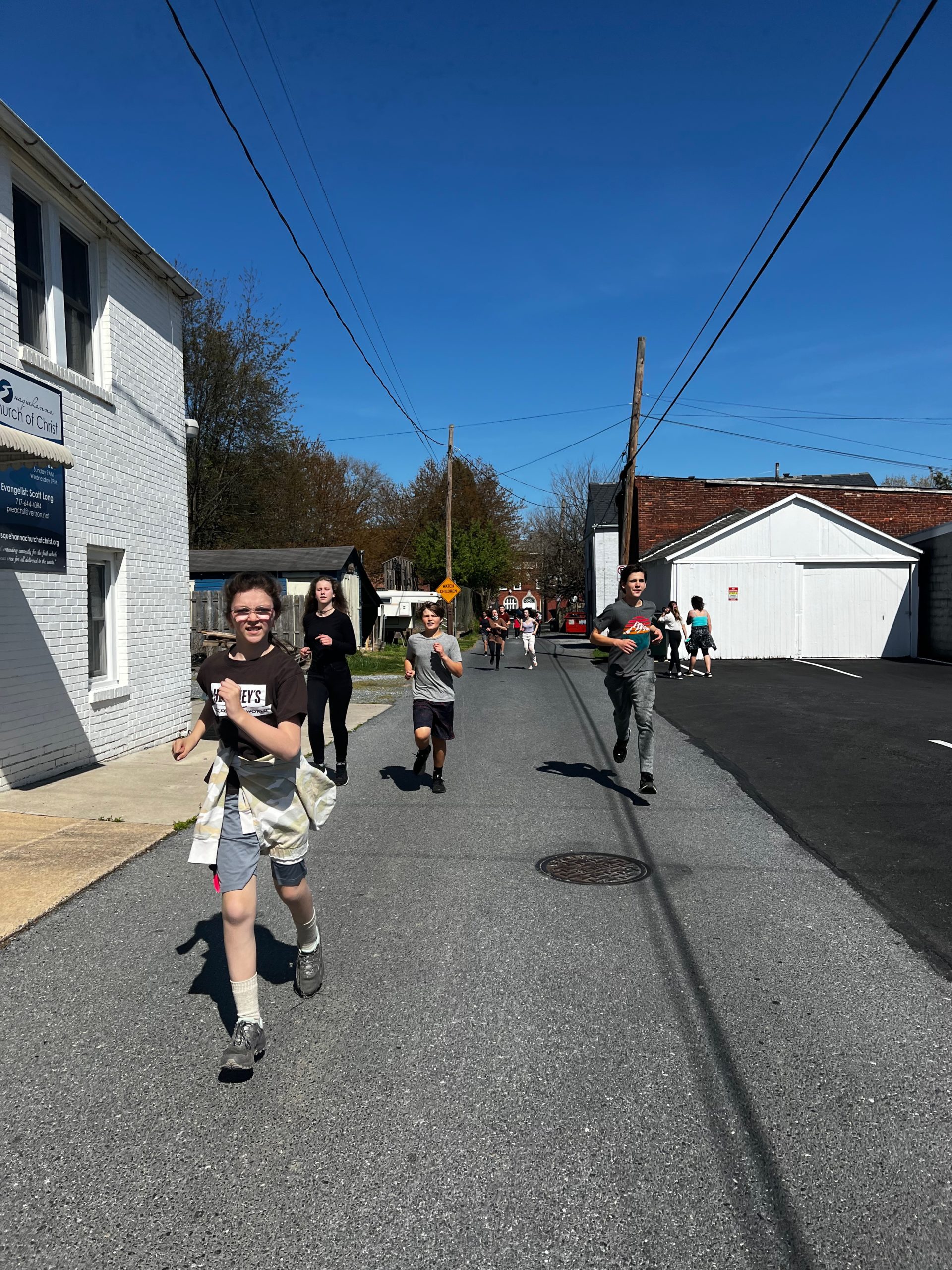
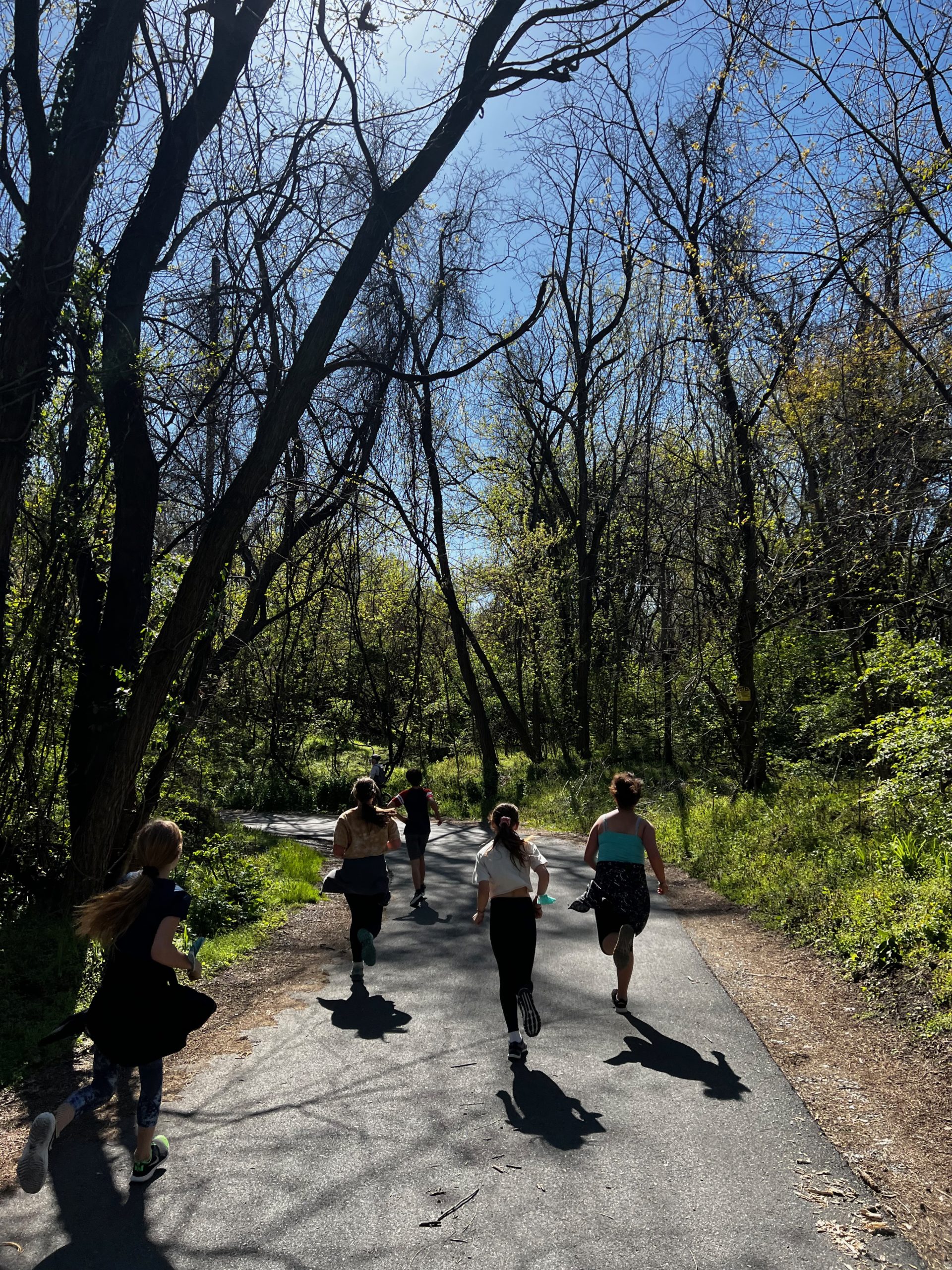
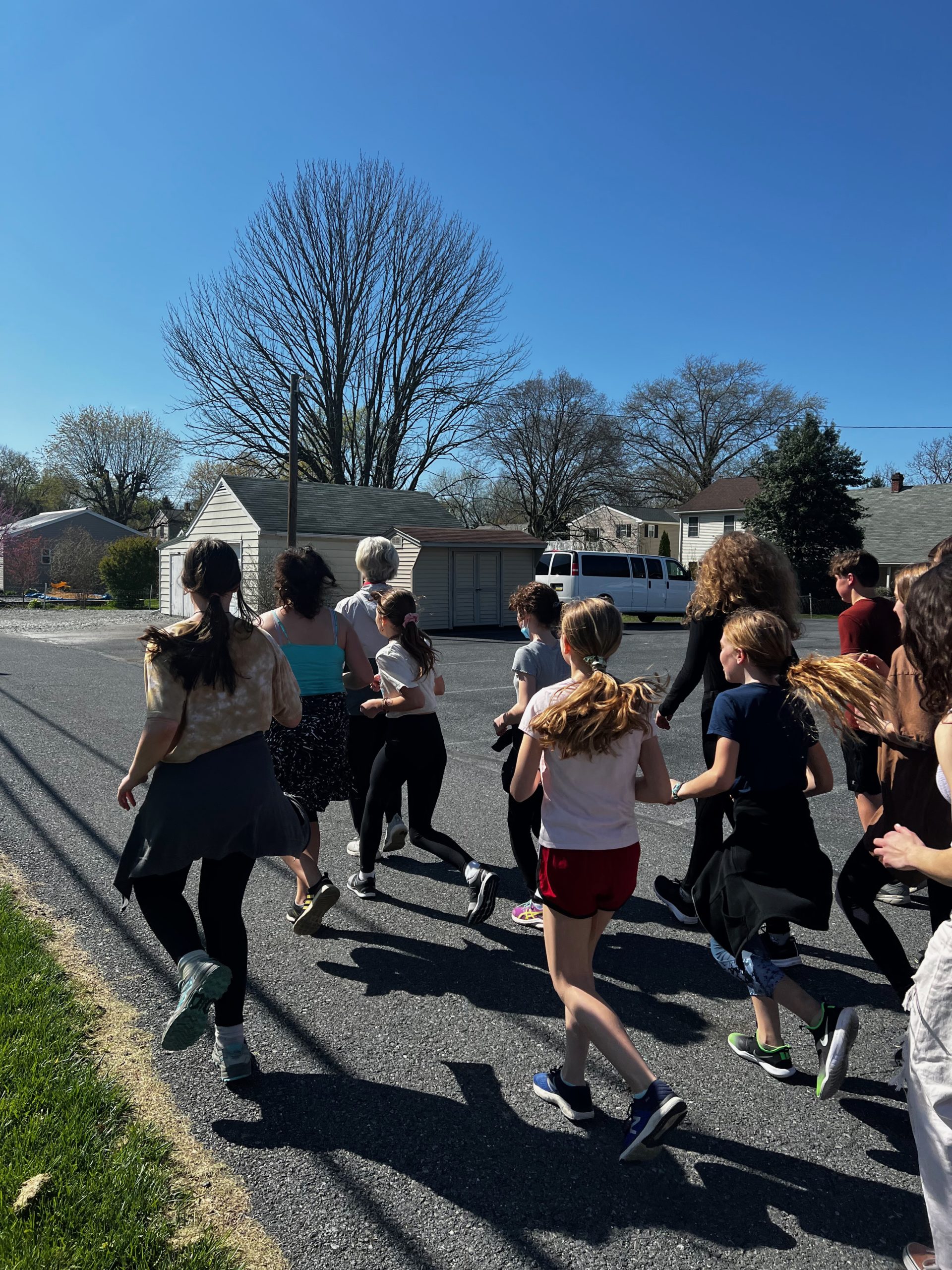
The SWS running club has participated in the Race Against Racism for over a decade but, for the first time ever, we invited our whole community to join. We also were a sponsor of the event this year! The Race Against Racism is not just another 5k. It's an opportunity for community members to come together to stand against racism and support an organization committed to eliminating racism and empowering women. Jasmyne King, the director of Lancaster YWCA's Center for Racial and Gender Equity, visited SWS to share more about the race and the important work the Lancaster YWCA is doing in our community.
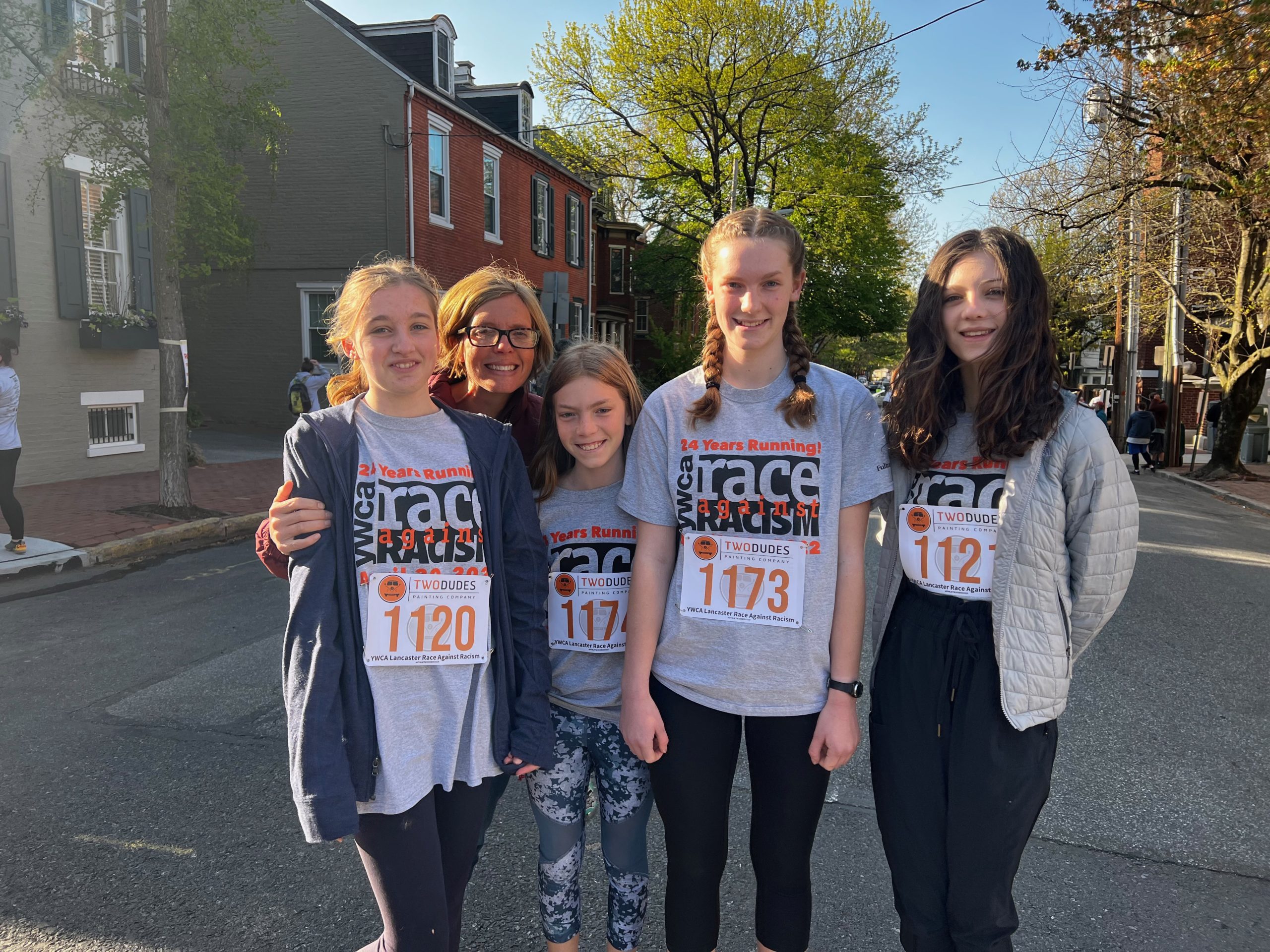
SWS students, faculty, staff, and families gathered together on a beautiful Saturday morning to prepare for the race. It was the first race for some of our students and there was nervous excitement in the air. We stretched together, we laughed, and we pumped each other up as the race approached. Some of us ran the whole race (including two middle school boys who did it in under 24 minutes!). Some of us walked. Some of us did a bit of both. Some of us cheered on from the finish line. We enjoyed live music along the way and the feeling of connection that arises when communities come together for a good cause. We all had so much fun and were thrilled when it was announced that we were the largest school group to participate in the Race Against Racism this year! Congratulations to all who participated. To learn more about the important work the Lancaster YWCA is doing, visit their website https://ywcalancaster.org/.
